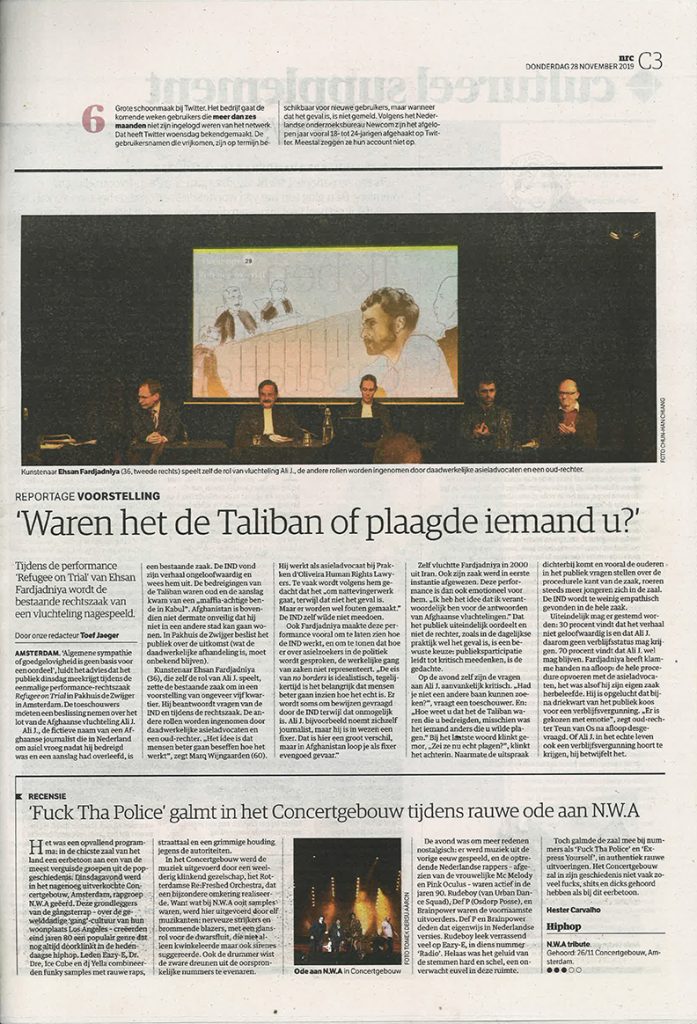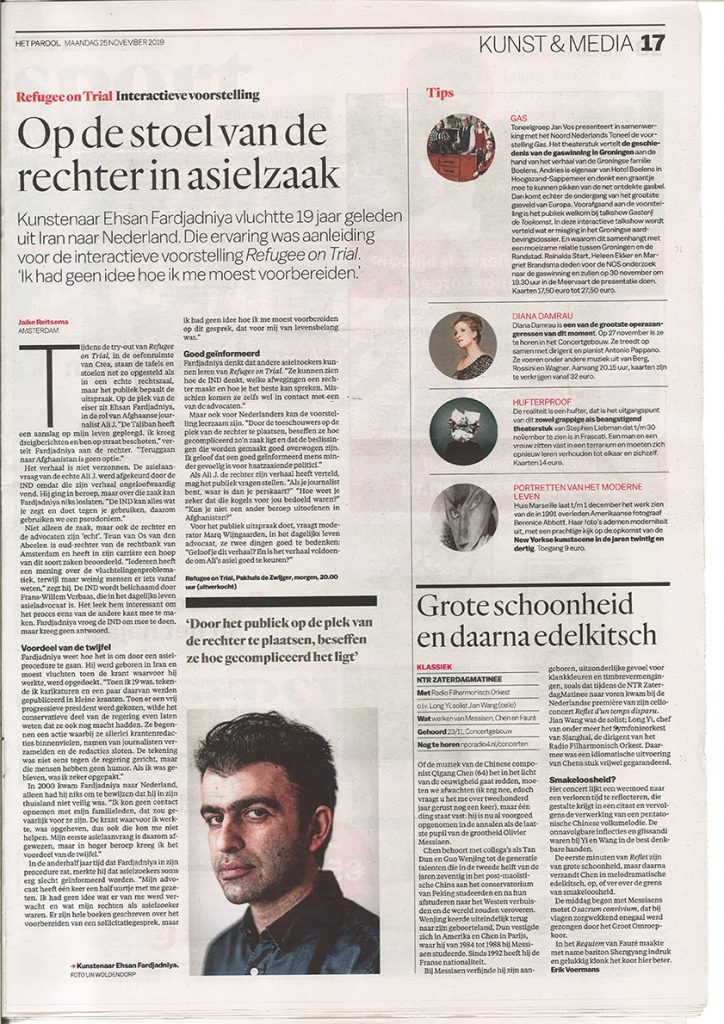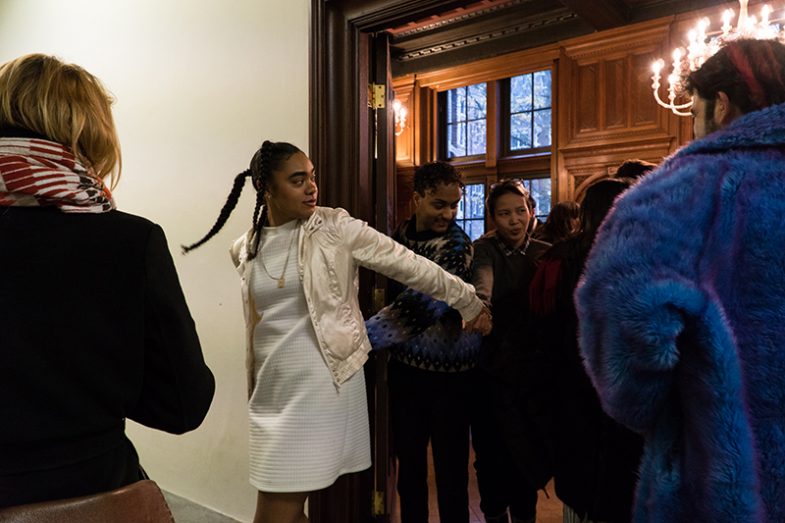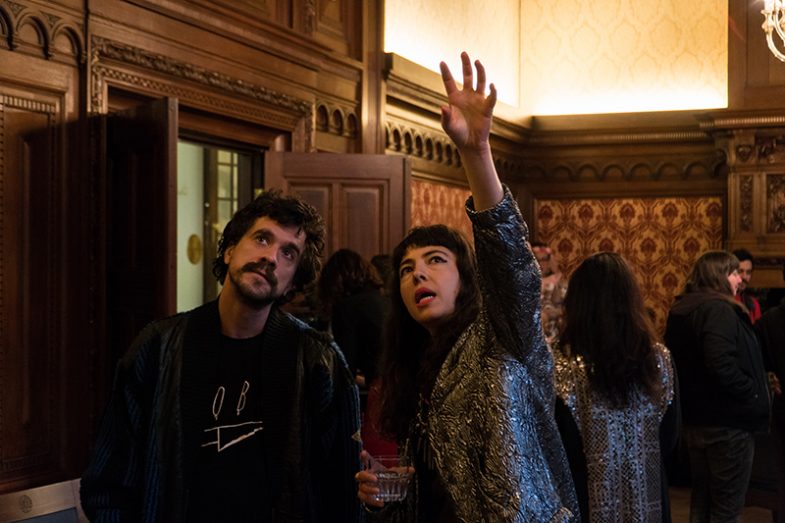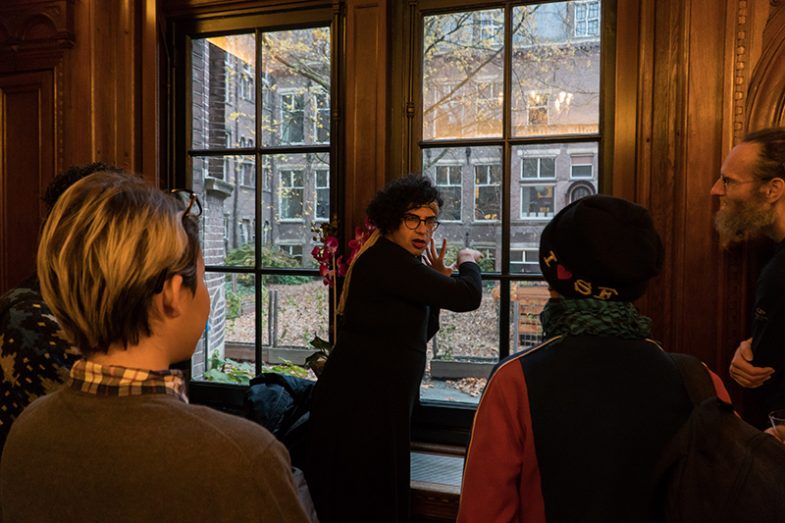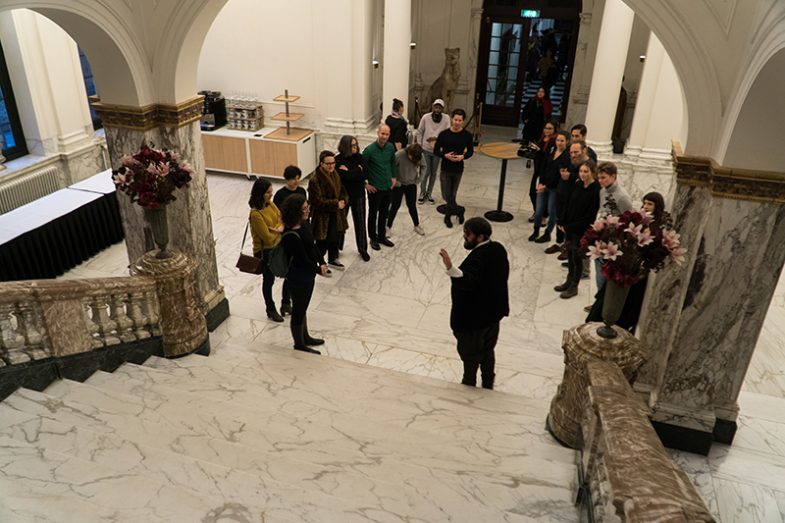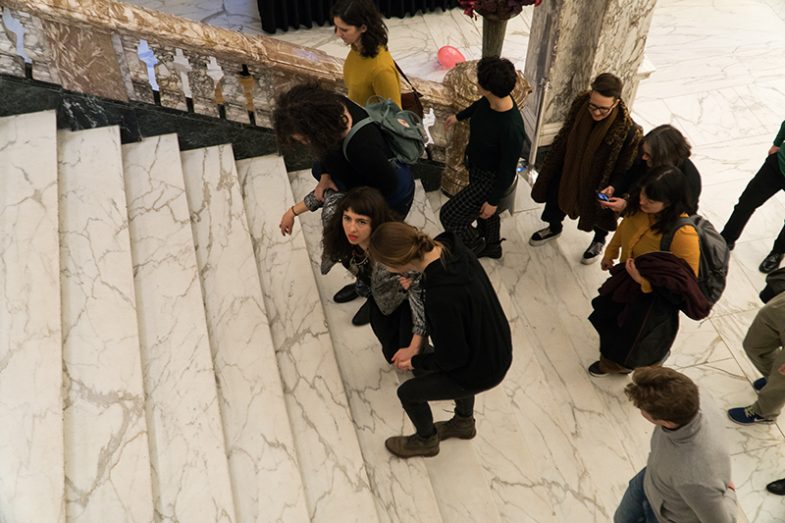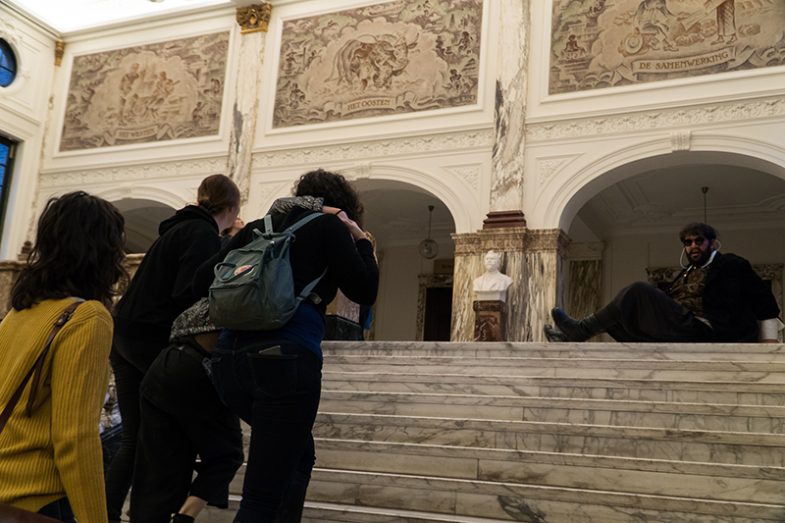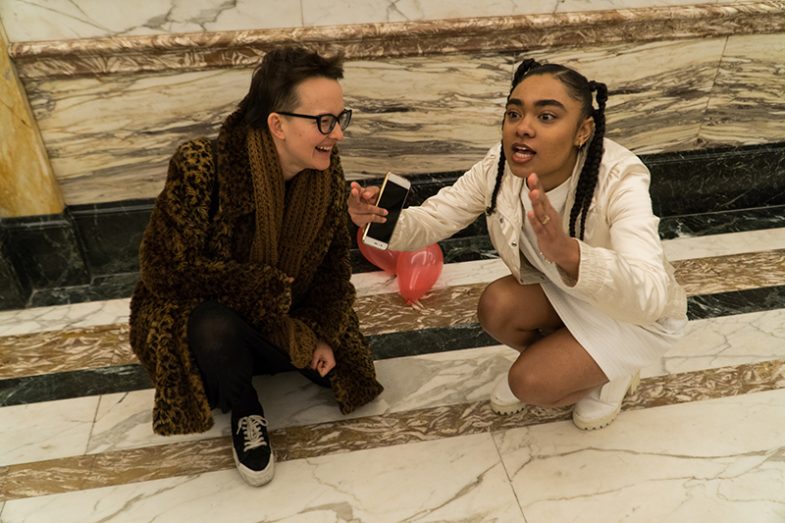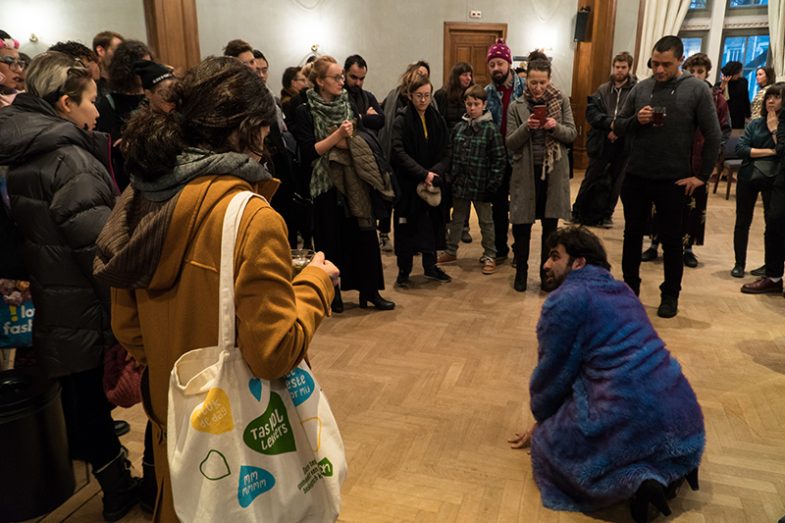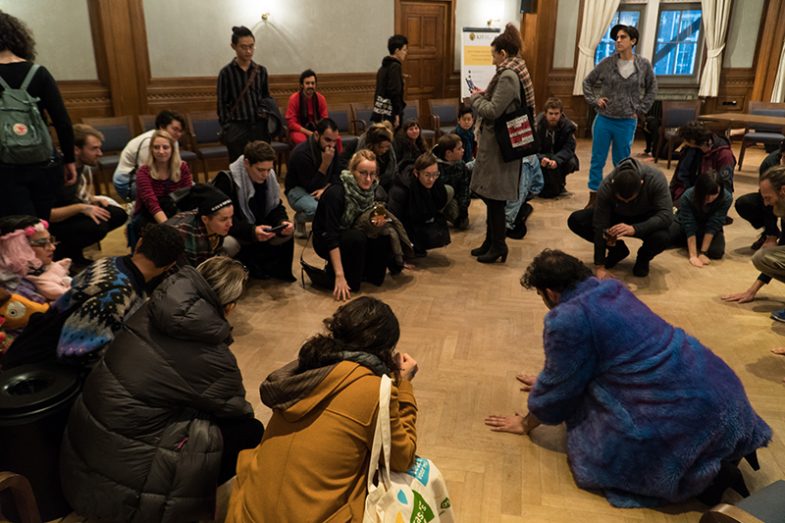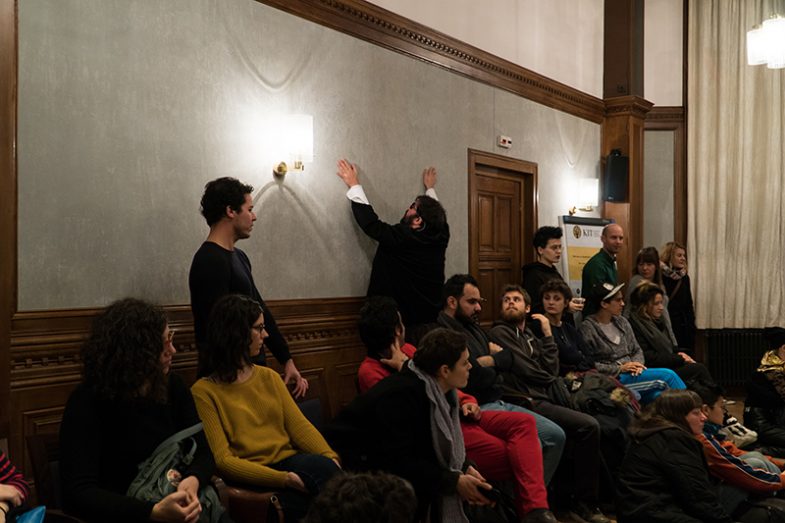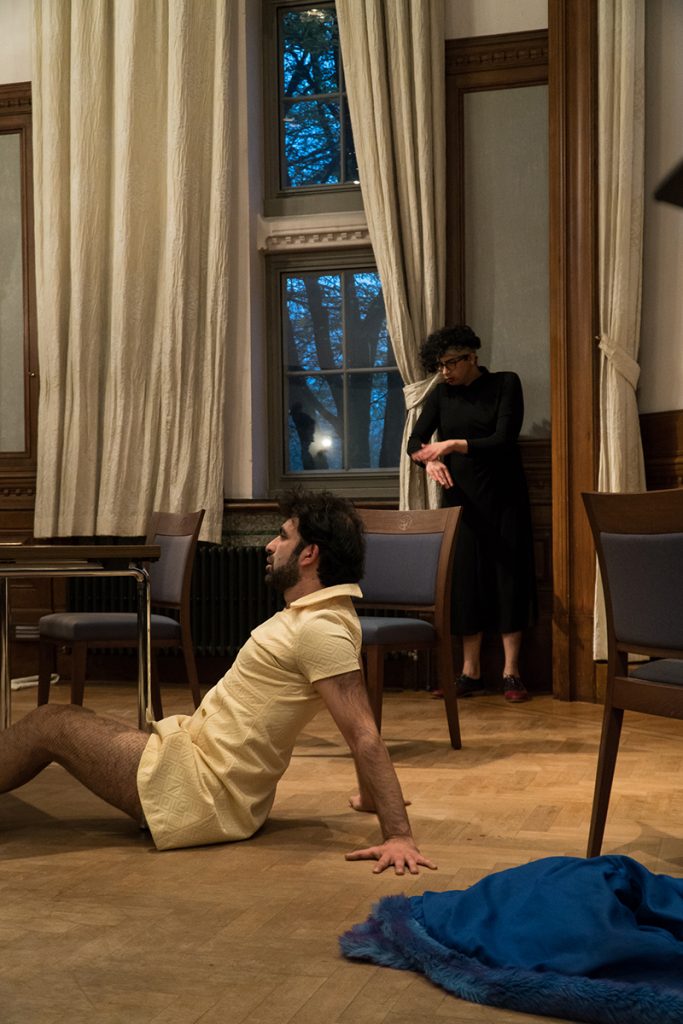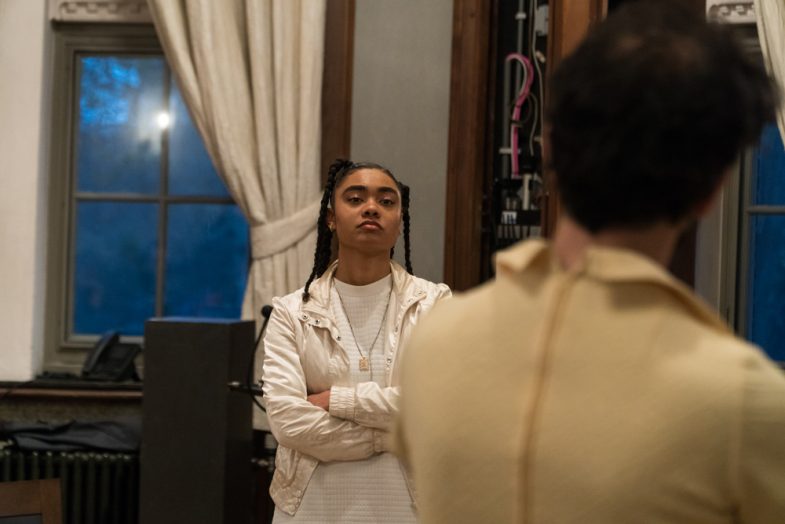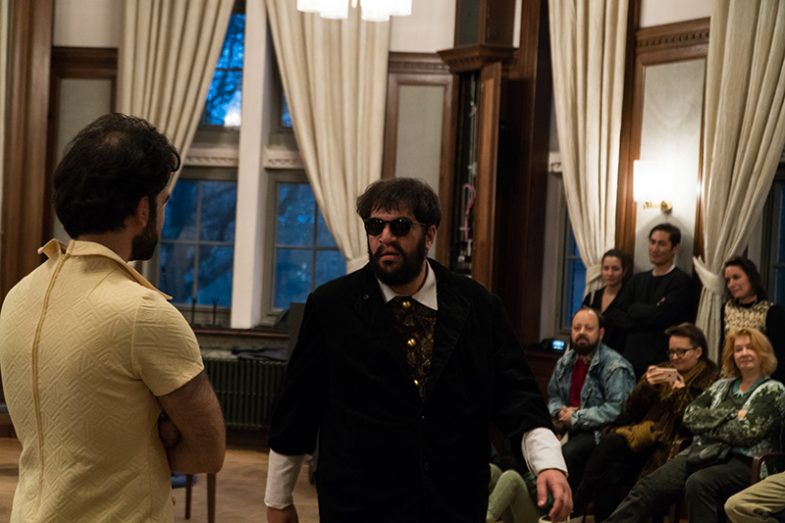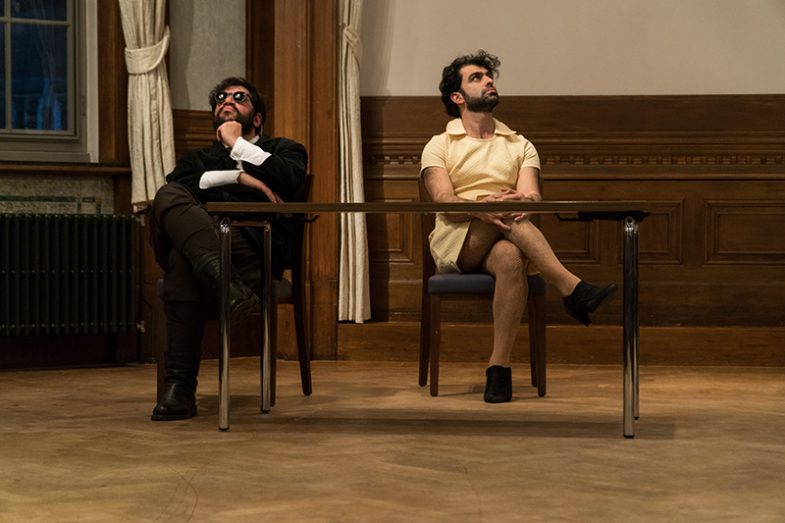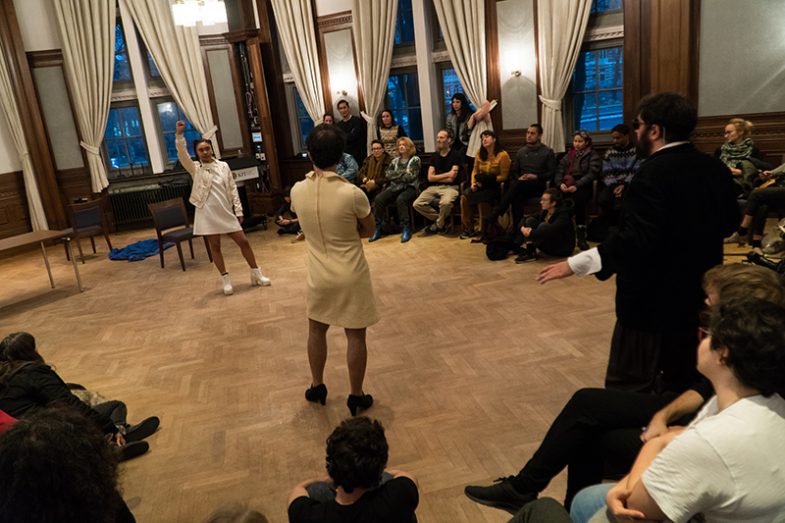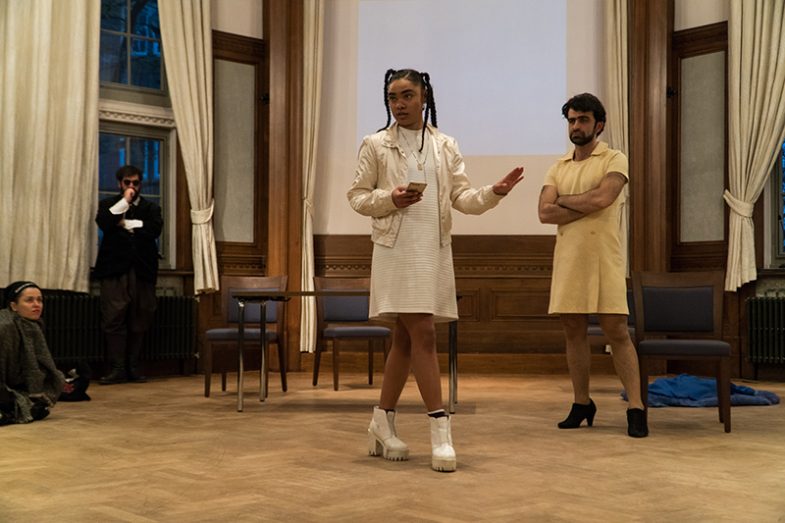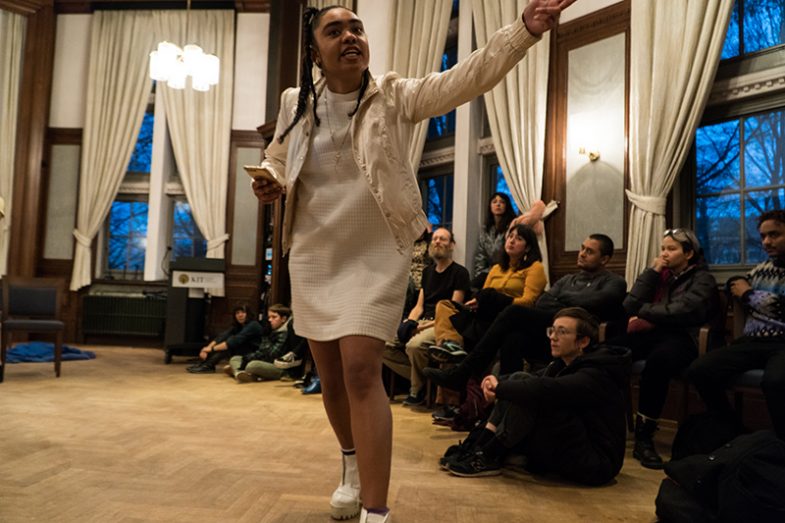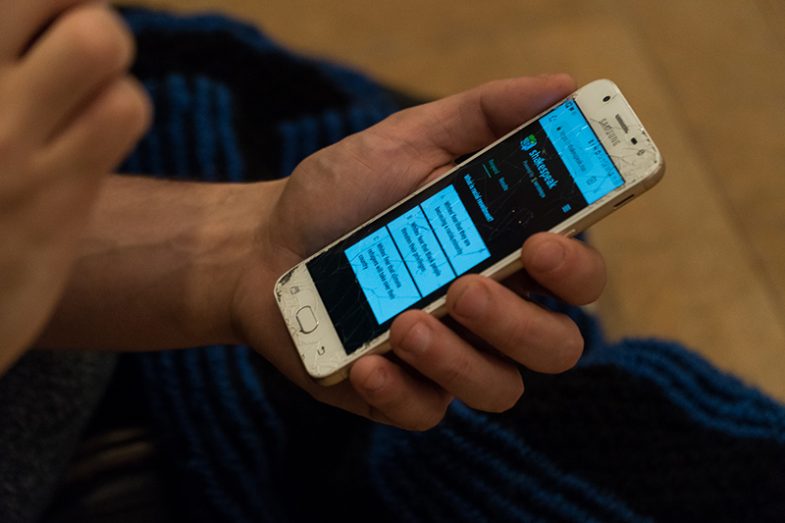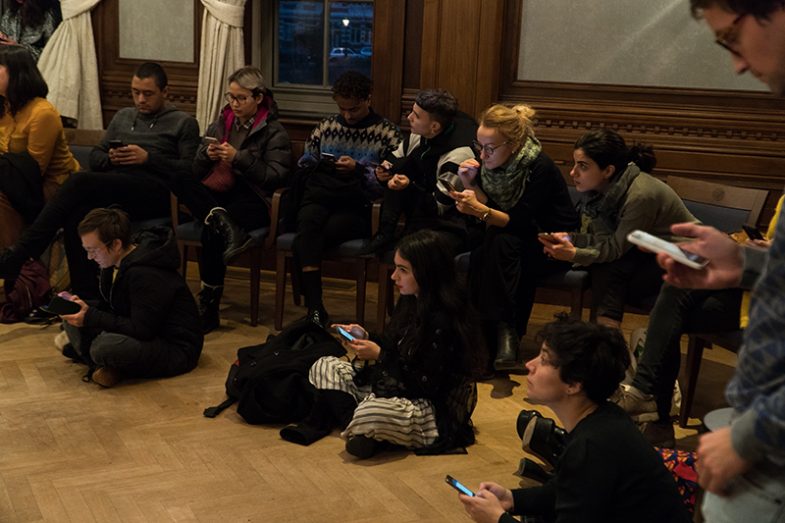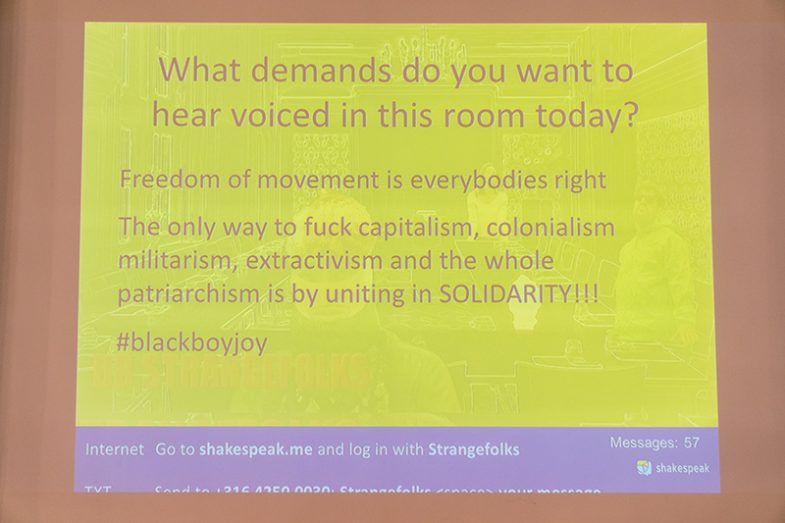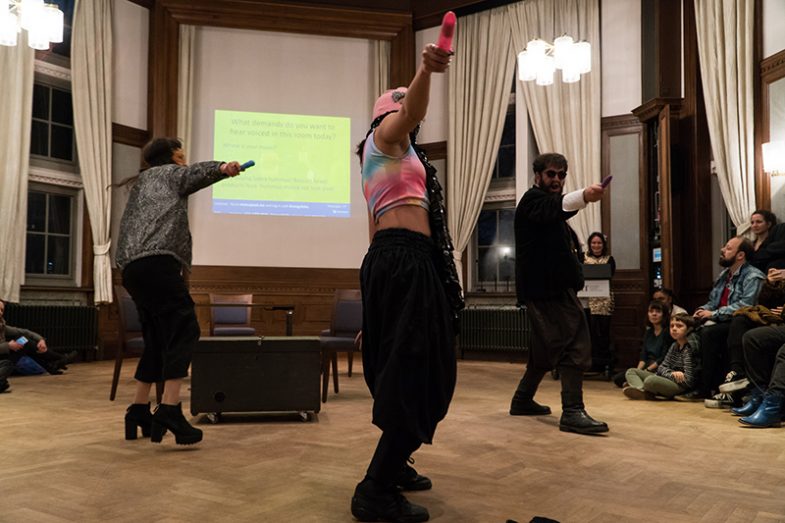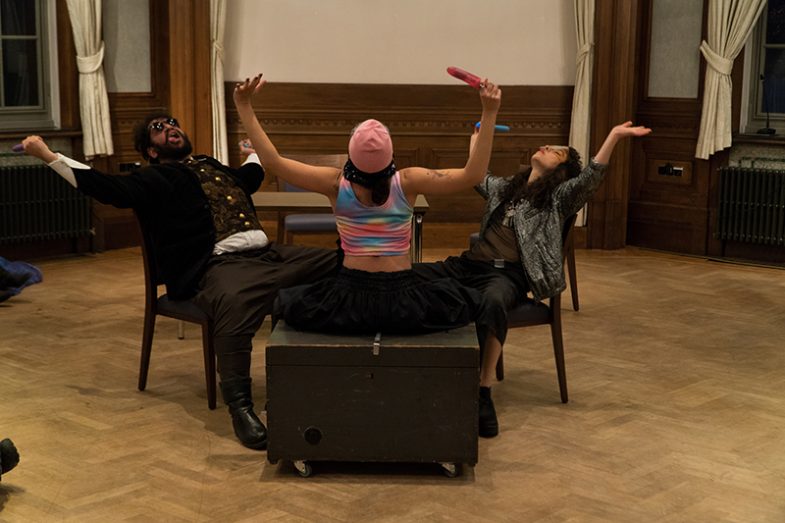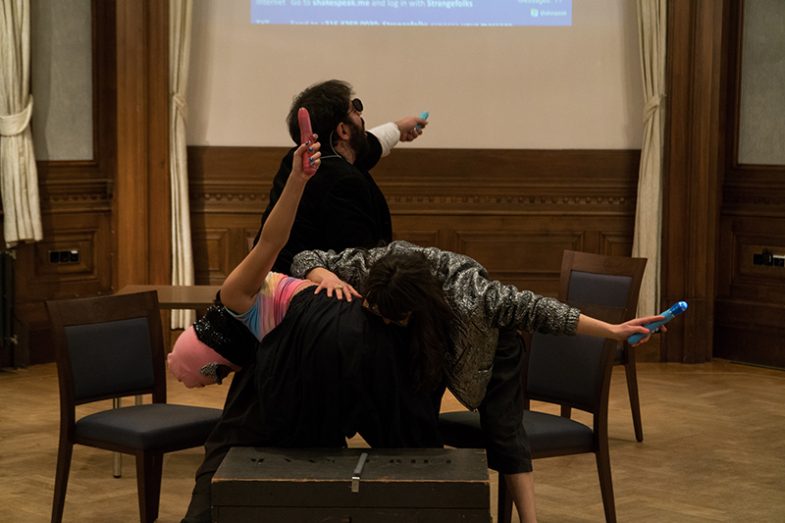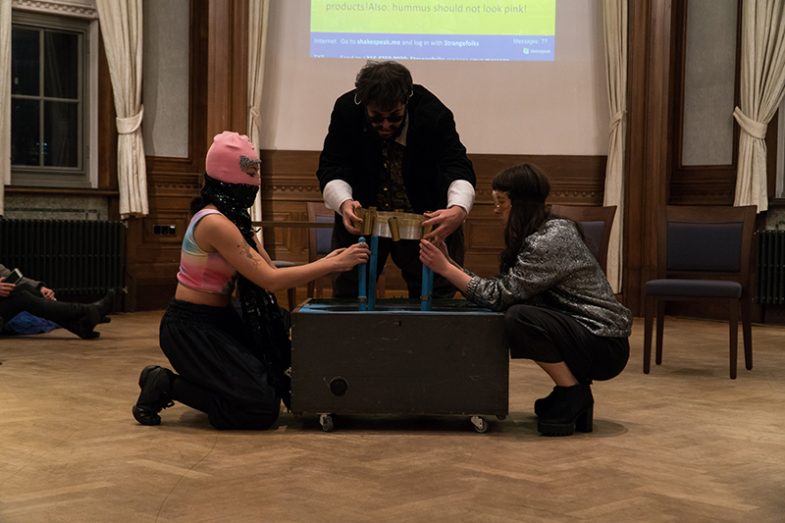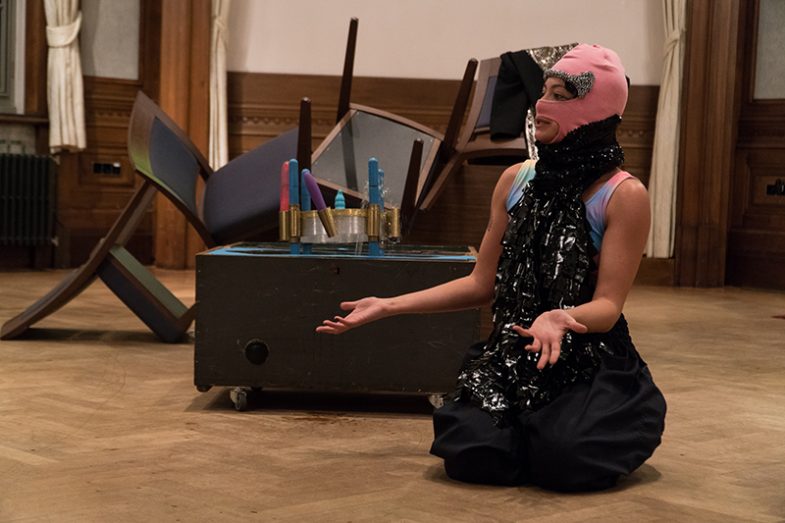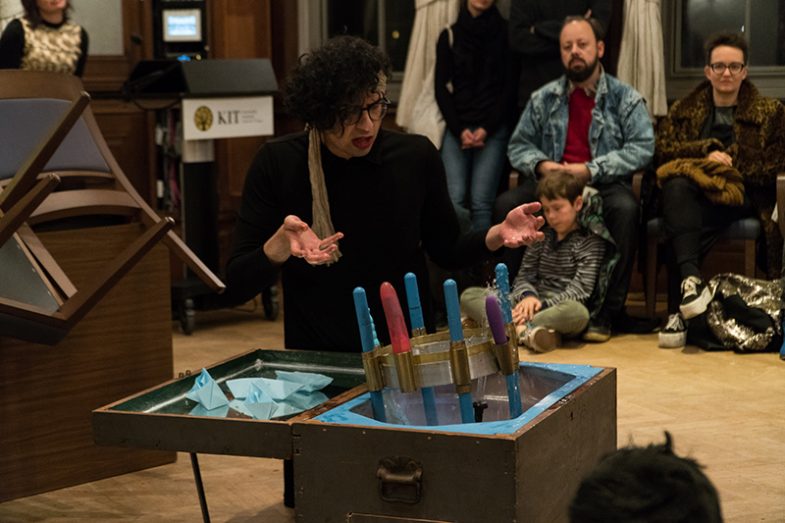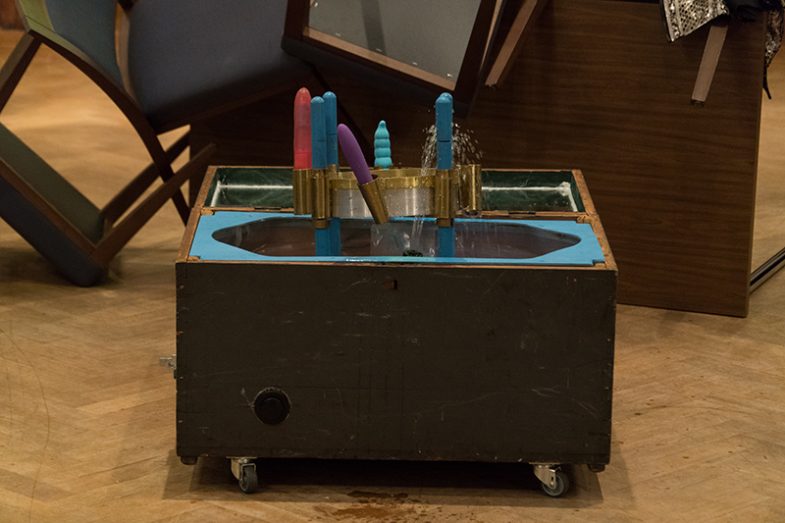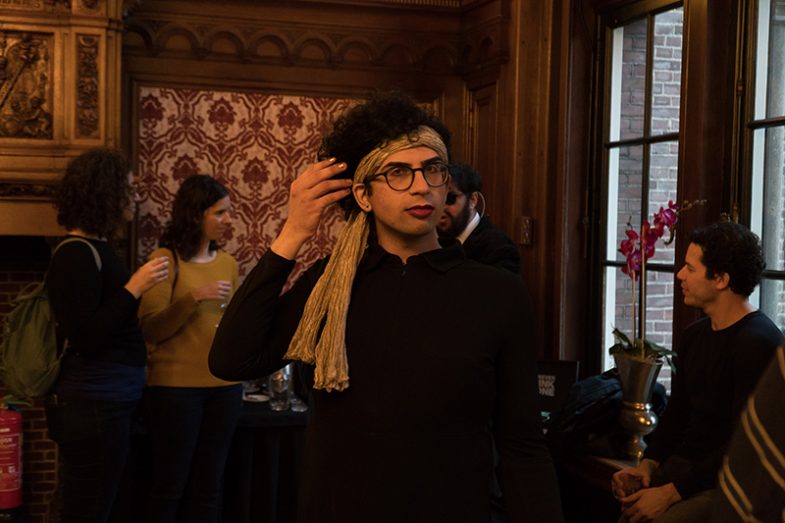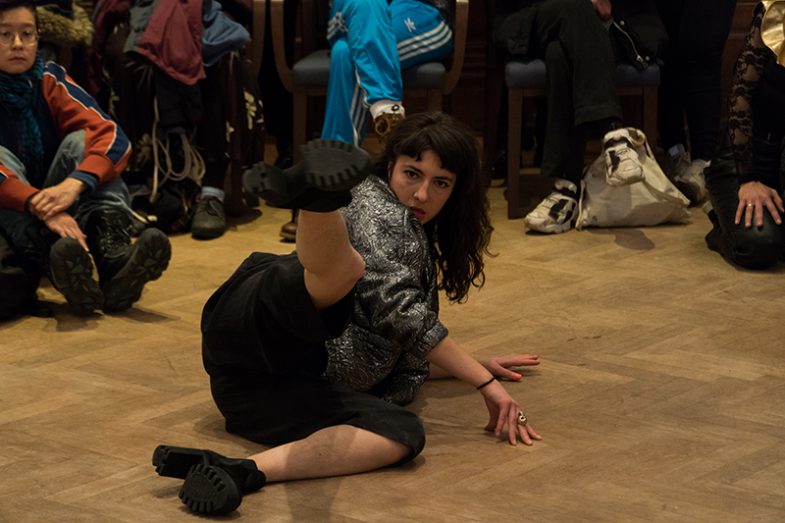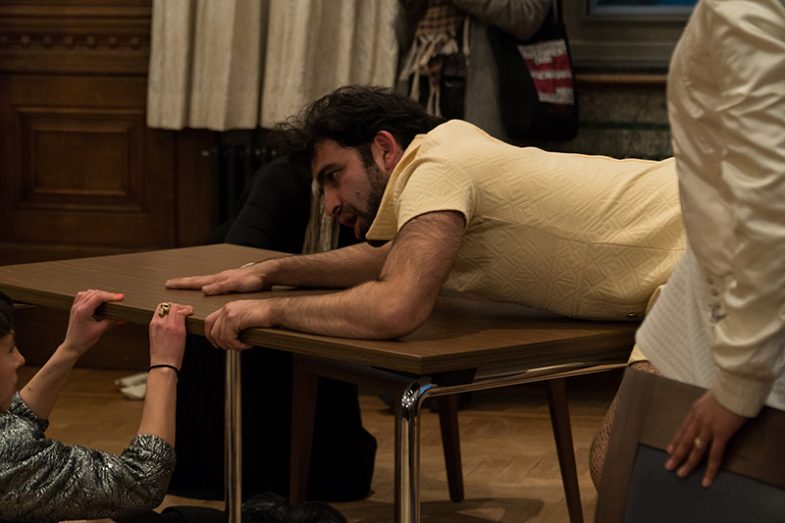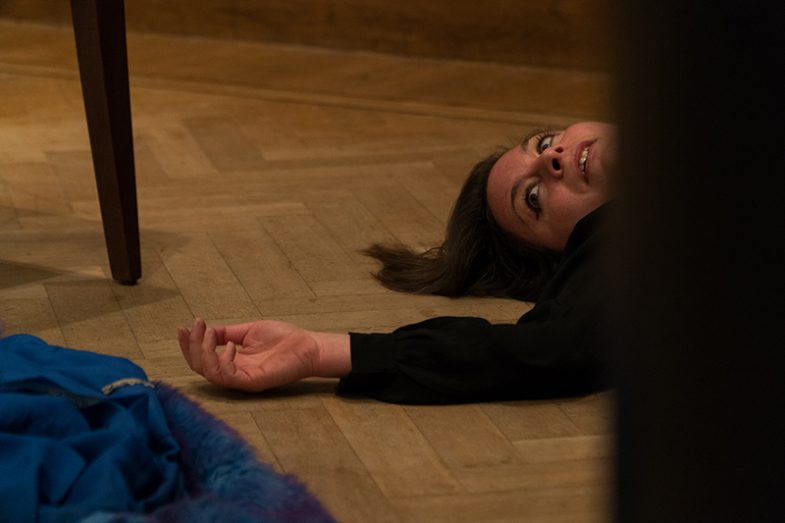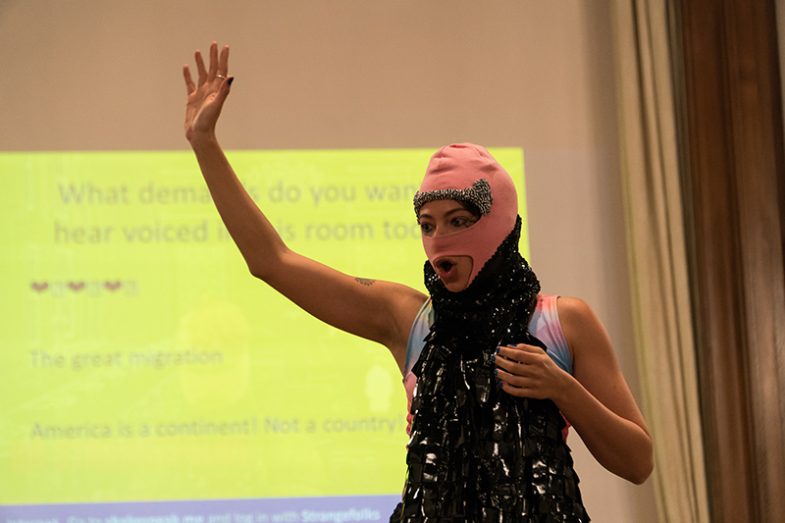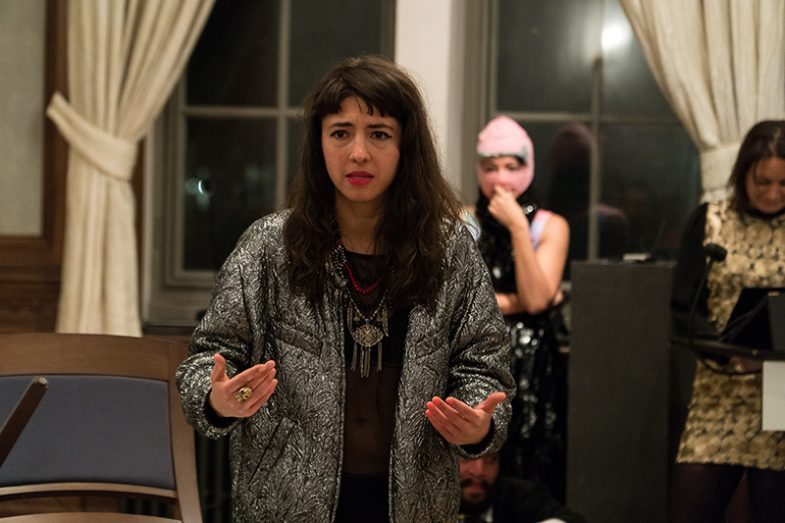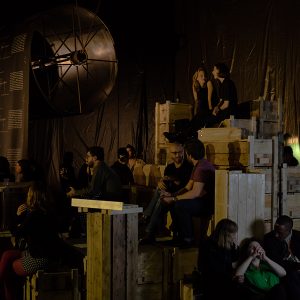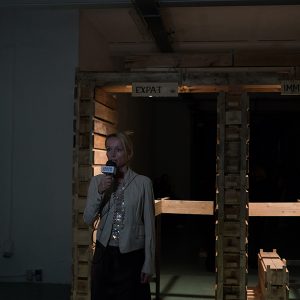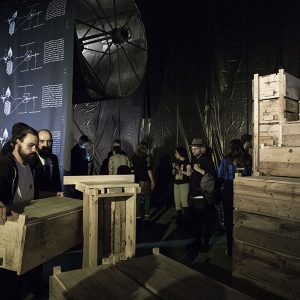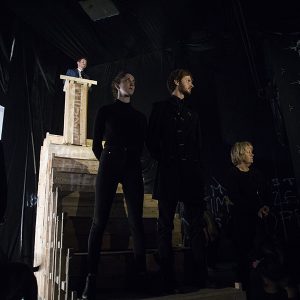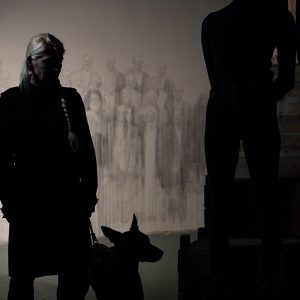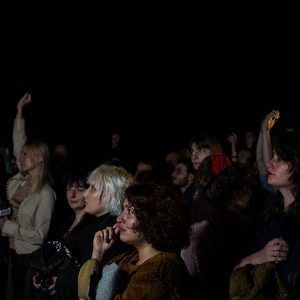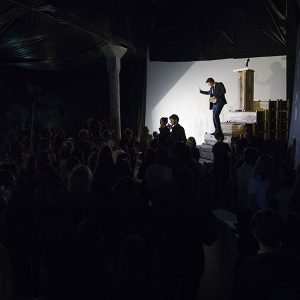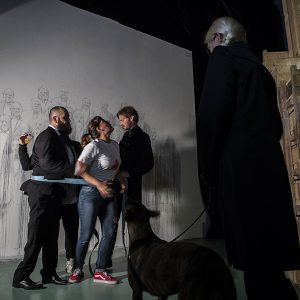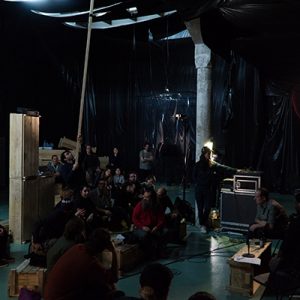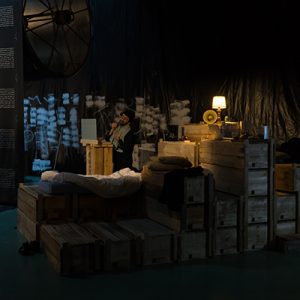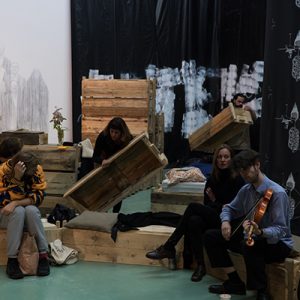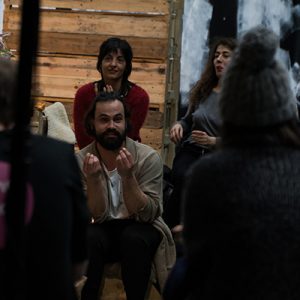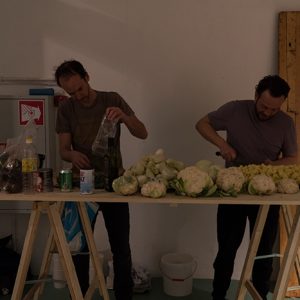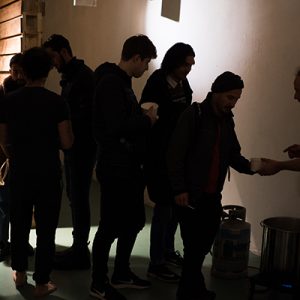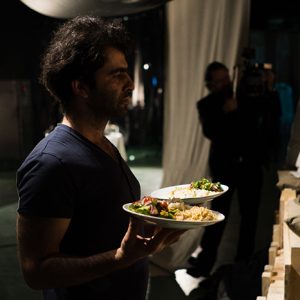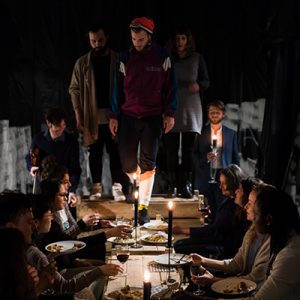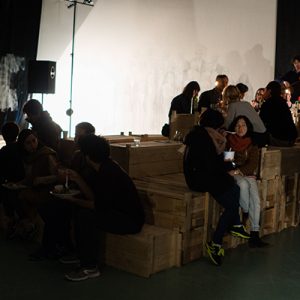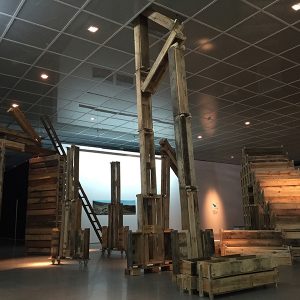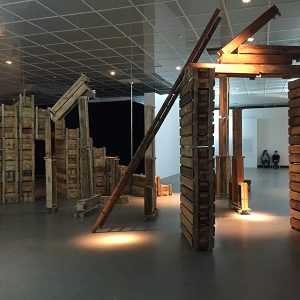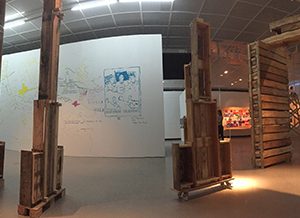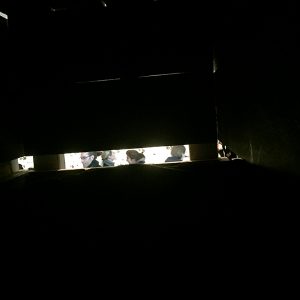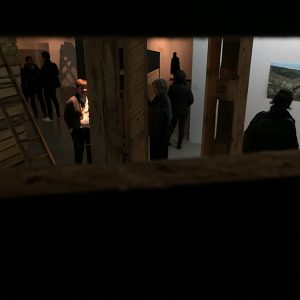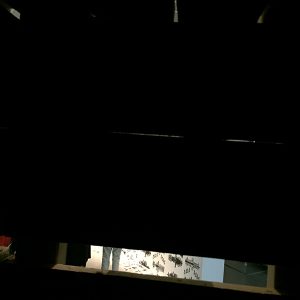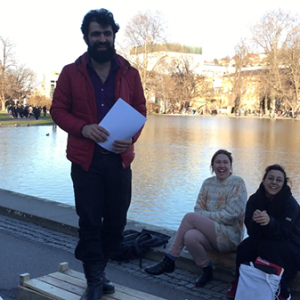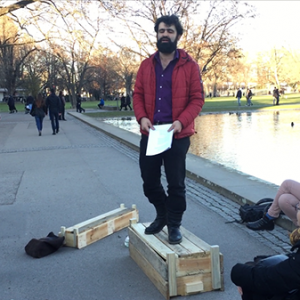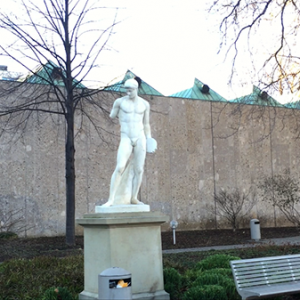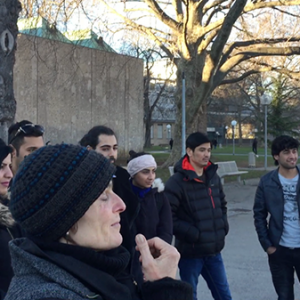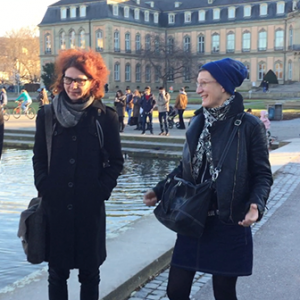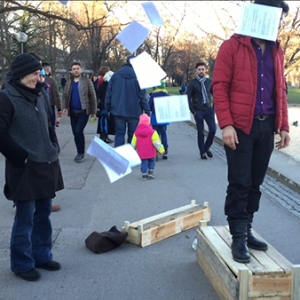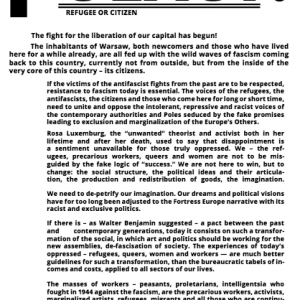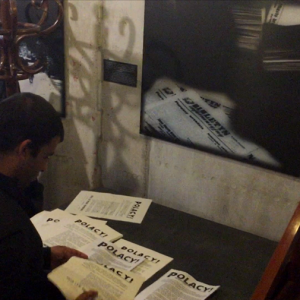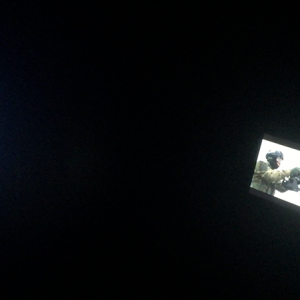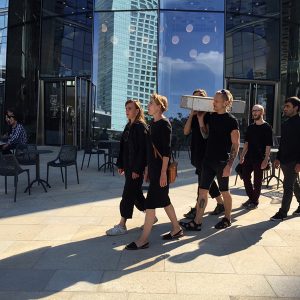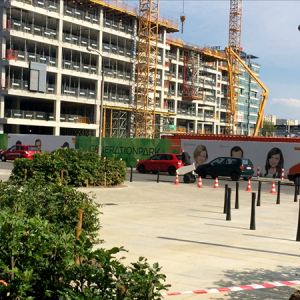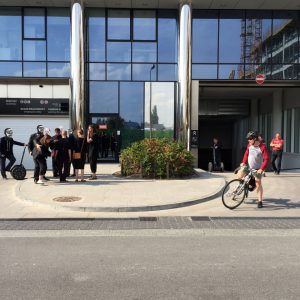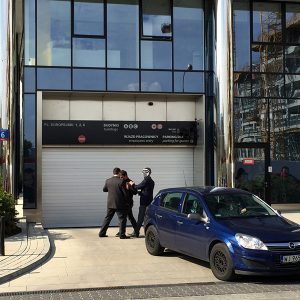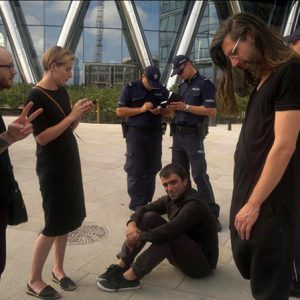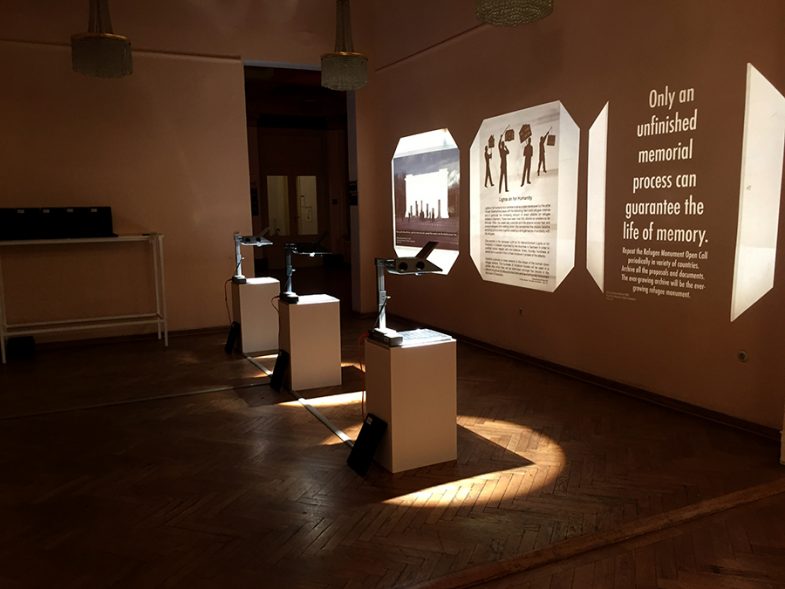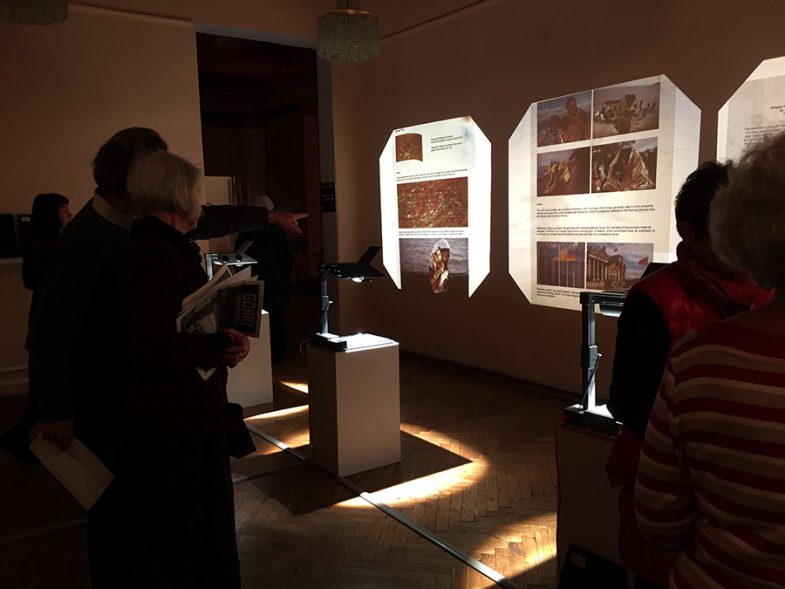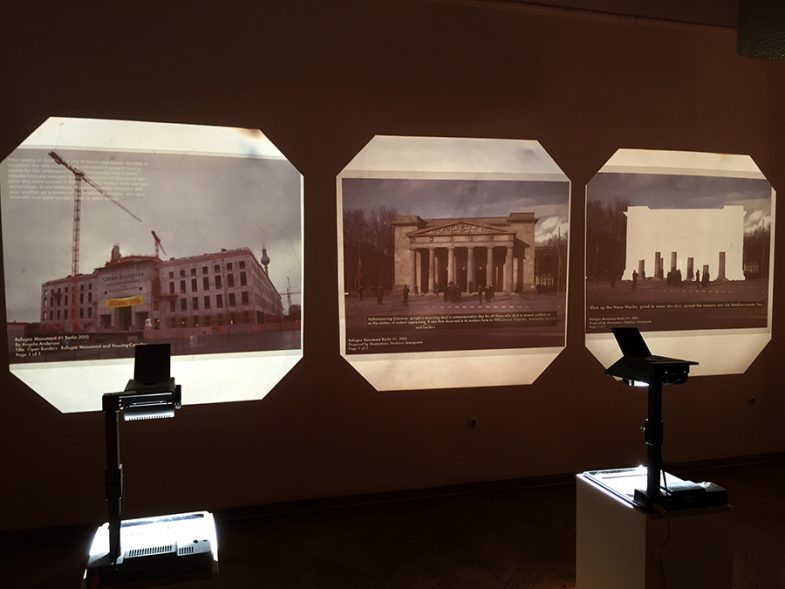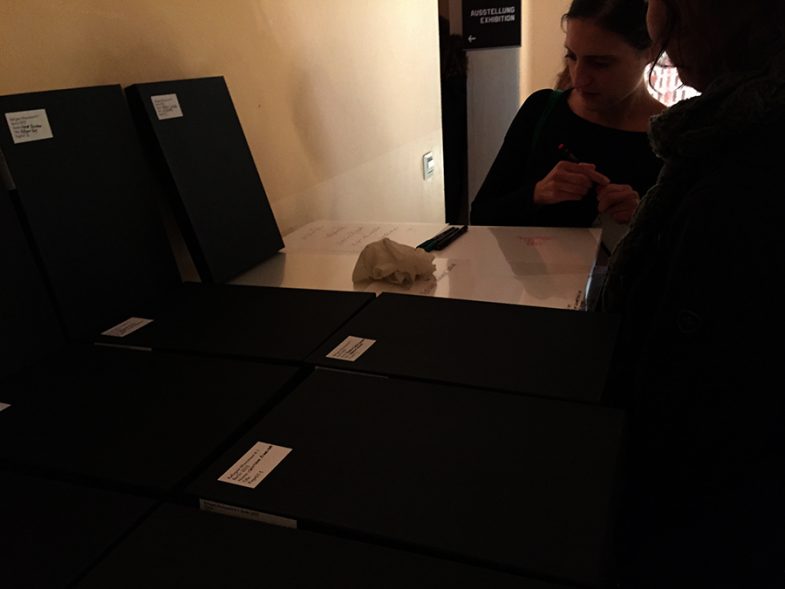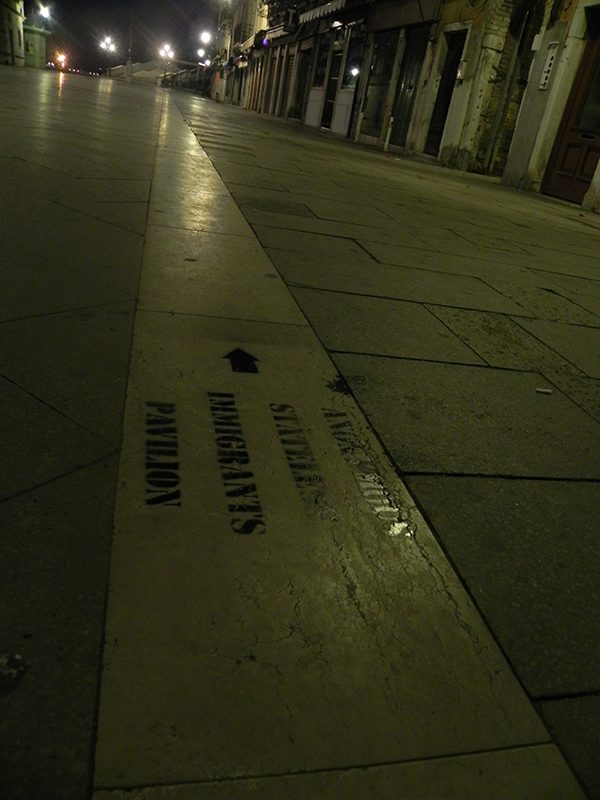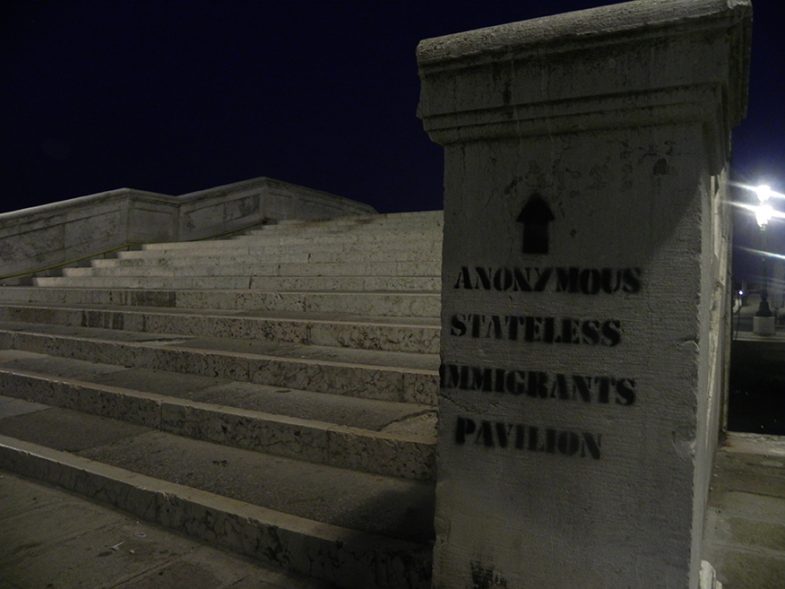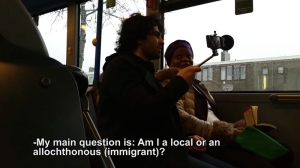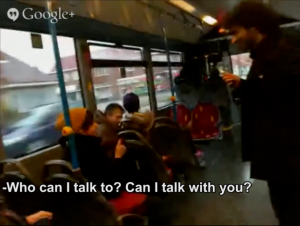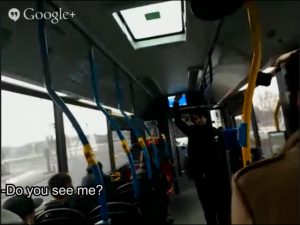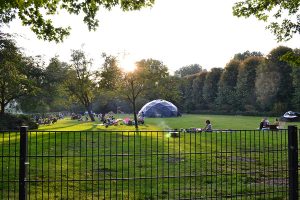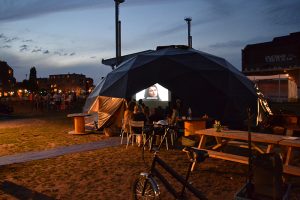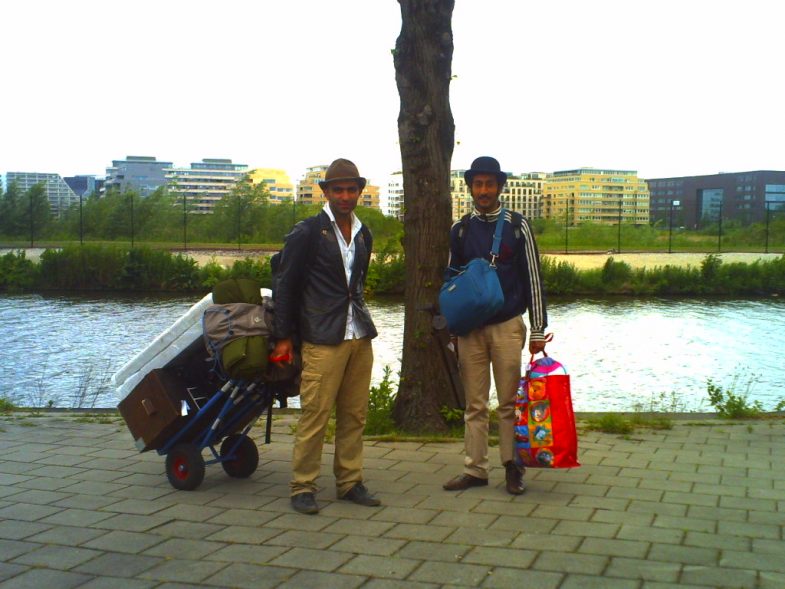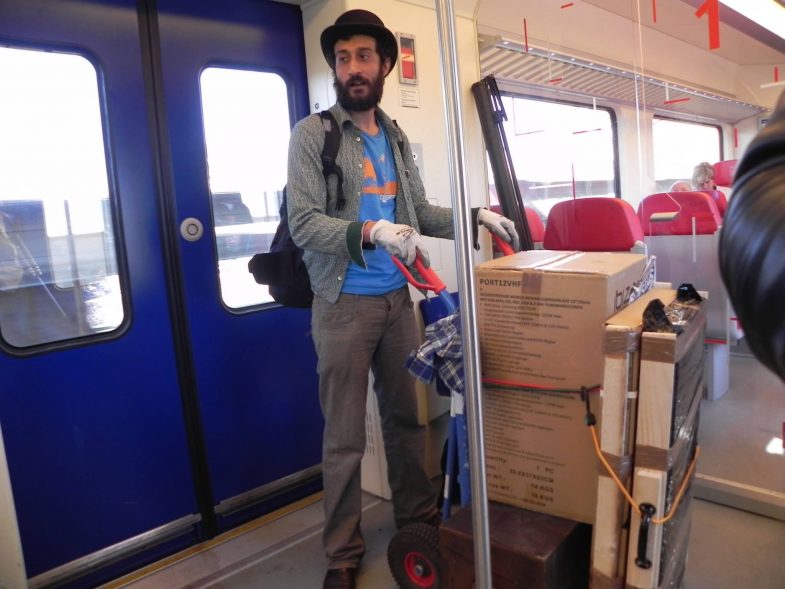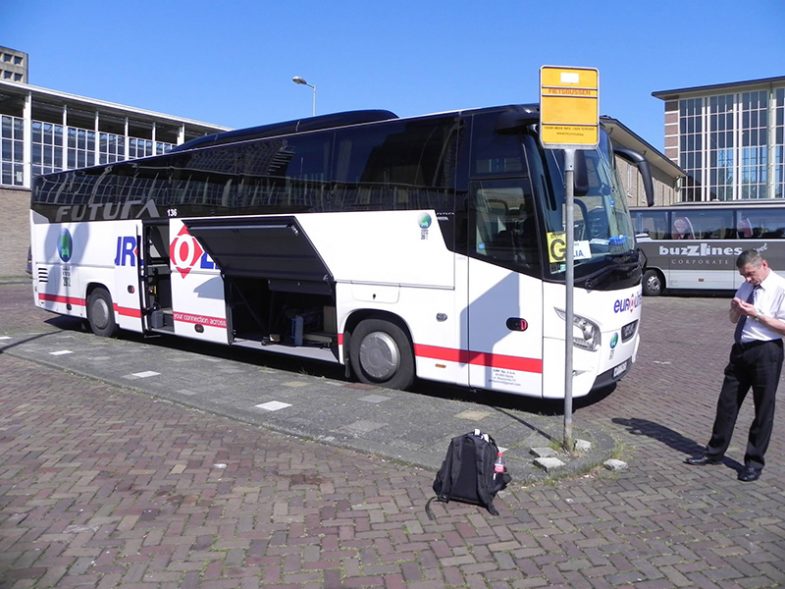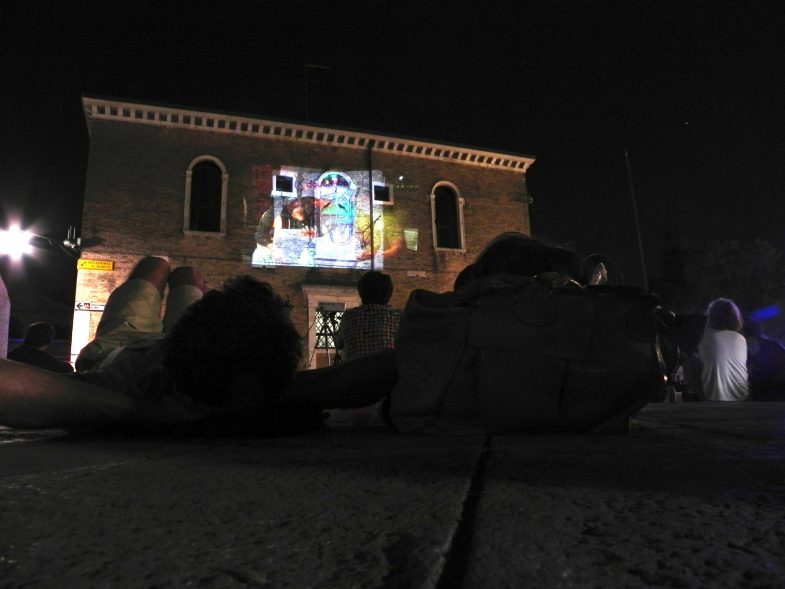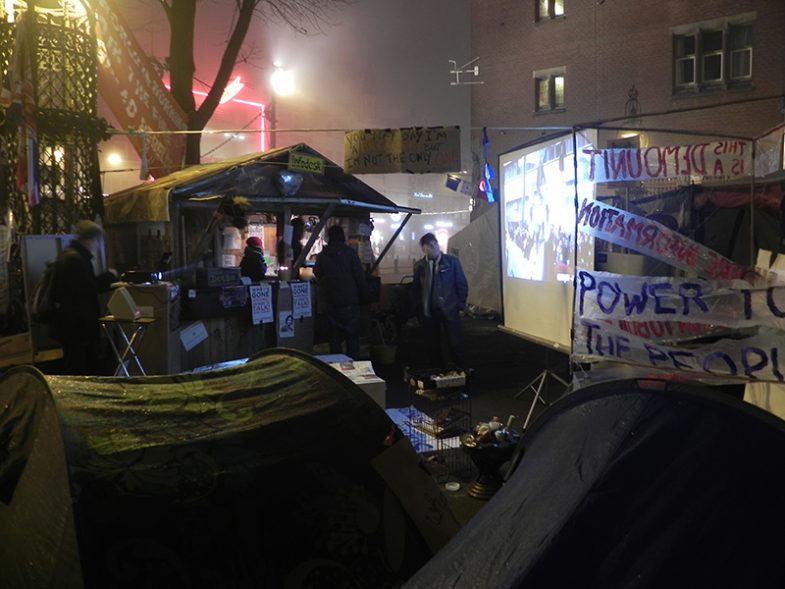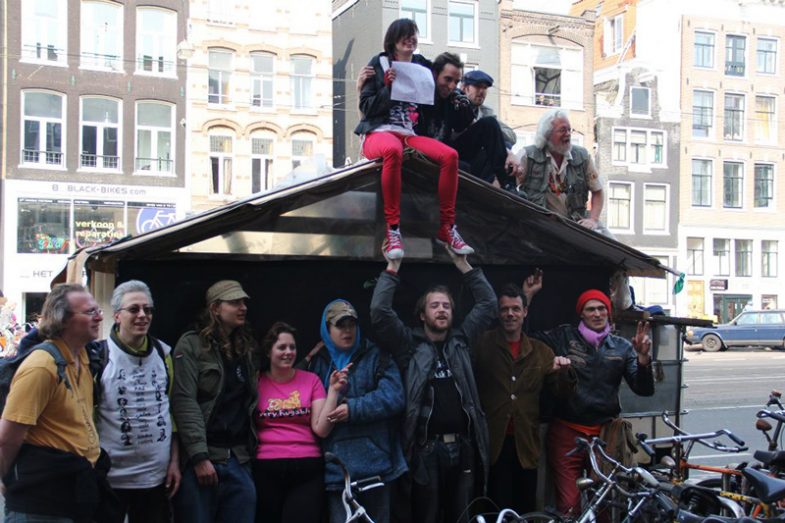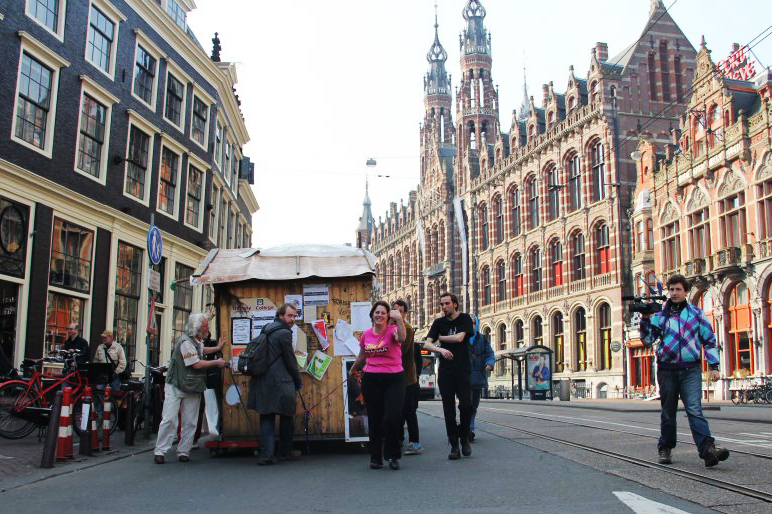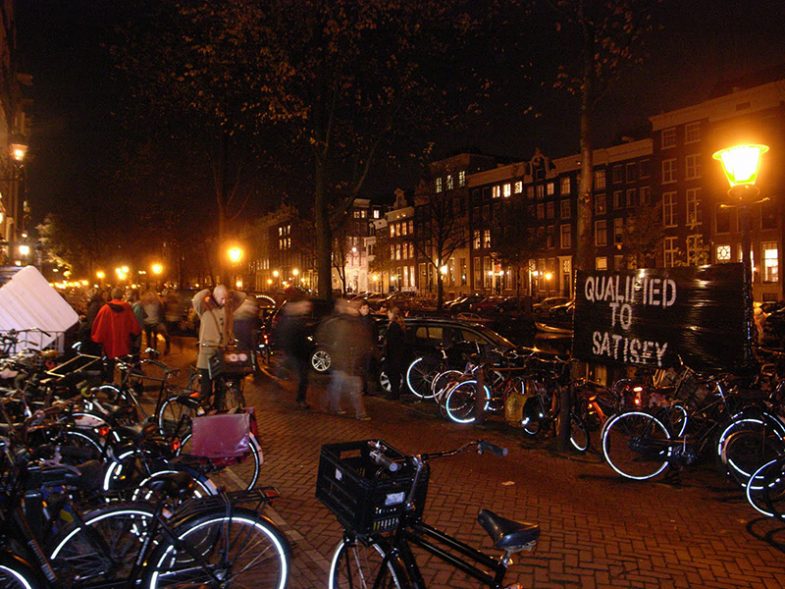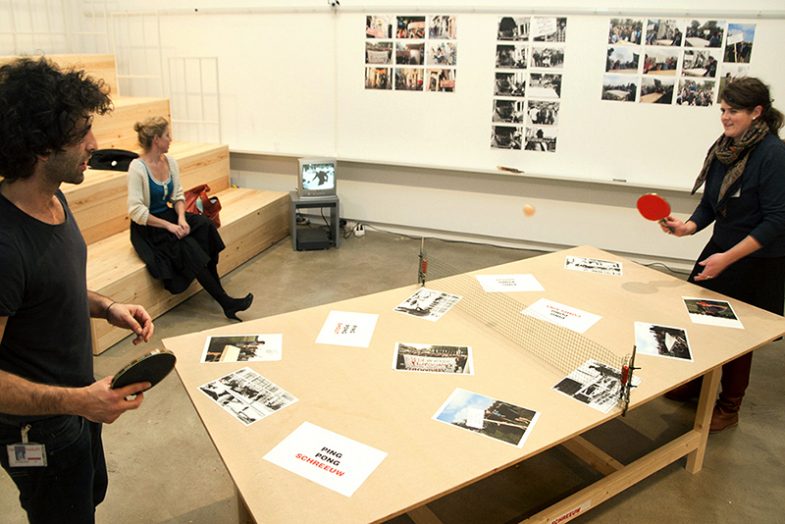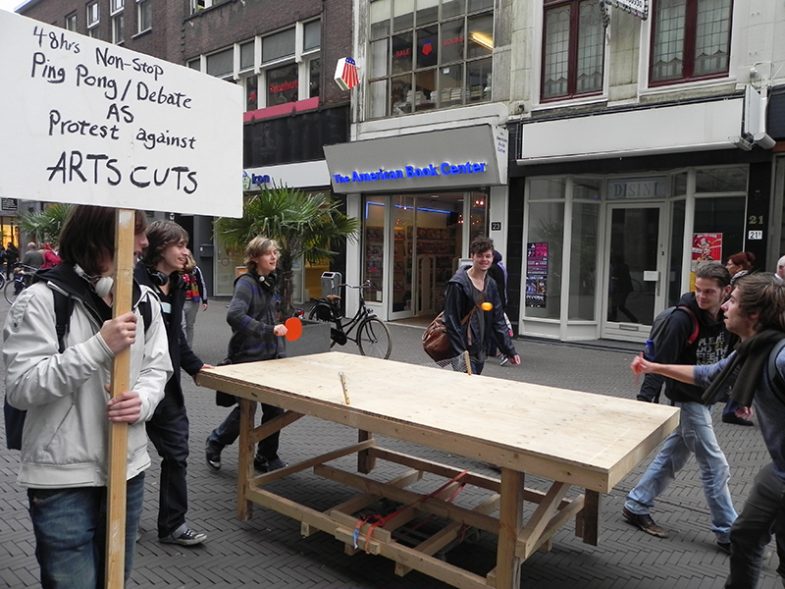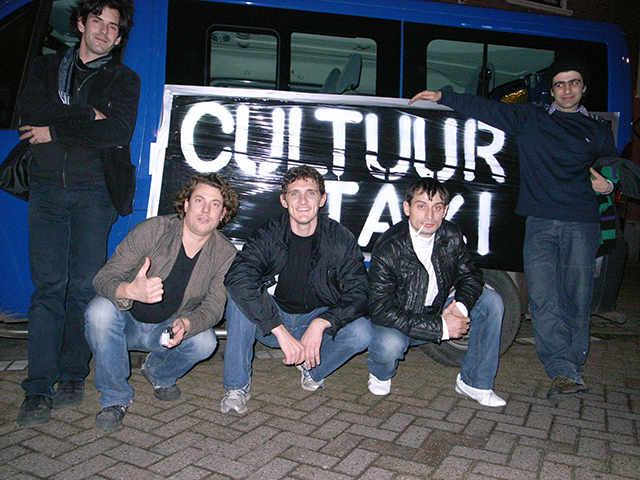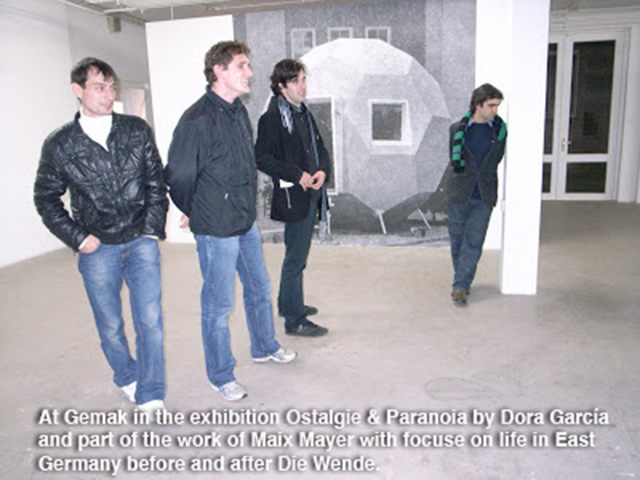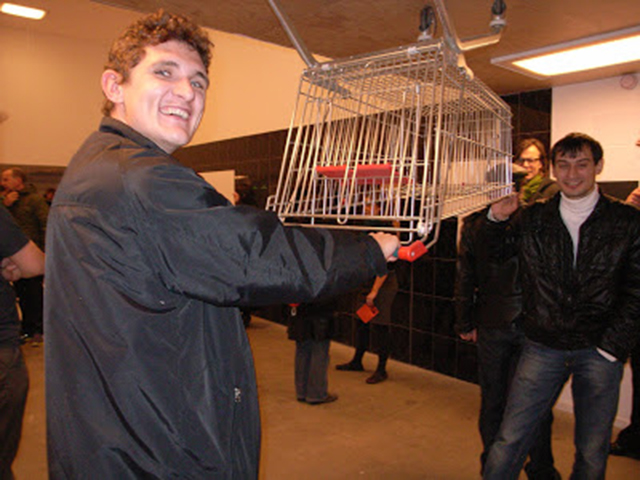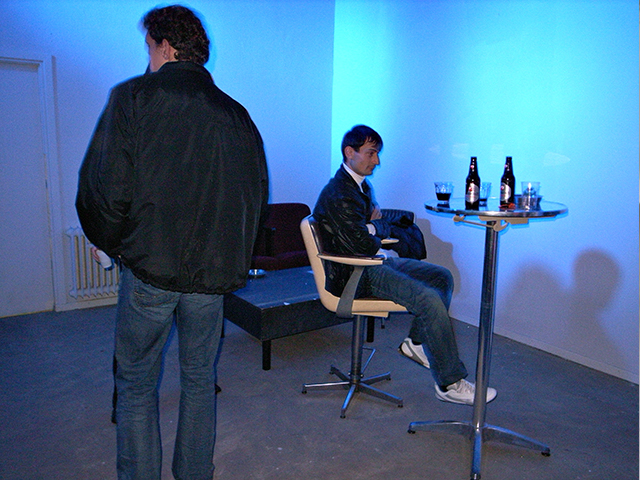Please see my latest portfolio in PDF format here below.
Author Archives: Ehsan Fardjadniya
‘Refugee on Trial: Afghan Journalist Ali J. vs Netherlands’ Performance. Ehsan Fardjadniya
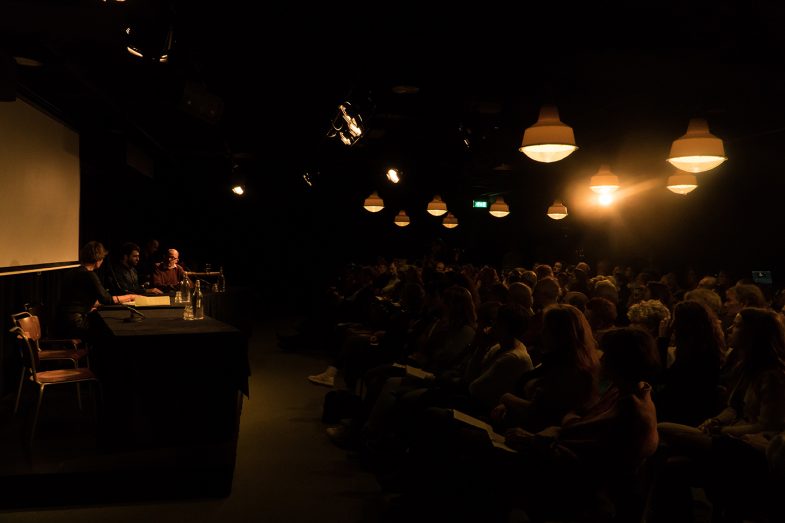
Hearing session, ‘Refugee on Trial’, Pakhuis de Zwijger, 26th Nov. 2019. Photo by Chun-Han Chiang 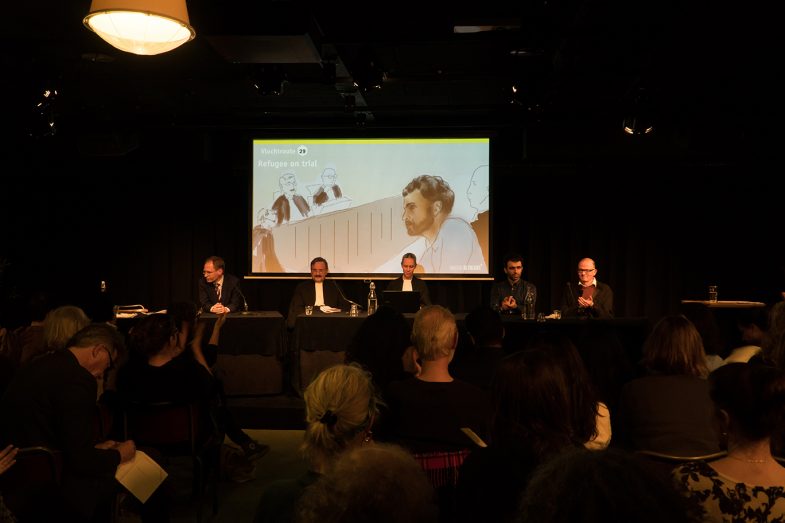
Court session, ‘Refugee on Trial’, Pakhuis de Zwijger, 26th Nov. 2019. Photo by Chun-Han Chiang
‘Refugee on Trial: Afghan Journalist Ali J. vs Netherlands’ Performance at Pakhuis de Zwijger, Amsterdam 26th Nov. 2019.
Articles above: NRC-Next, Het Parrol
[DUTCH]
In de interactieve performance “Refugee on Trial: Rechtszaak van Afghaanse Journalist Ali J. vs. Nederland” gaat de gevluchte Ali J. in beroep bij de rechtbank. Zijn asielaanvraag is afgewezen door de IND die zijn verhaal ongeloofwaardig en incoherent vindt. Toch stelt Ali J. dat hij werkelijk bedreigd wordt door de Taliban. Deze performance is gebaseerd op een werkelijke asielzaak, en betrekt het publiek bij het proces. Het door Ehsan Fardjadniya geregisseerde stuk nodigt toeschouwers uit kritisch mee te denken over het label ‘vluchteling’. Wat is nodig om als vluchteling te worden erkend, en wie beslist daarover?
[ENG]
In the interactive performance “Refugee on Trial: Afghan Journalist Ali J. vs. Netherlands”, the asylum-seeker Ali J. appeals to the court. His asylum application has been rejected by the IND (Dutch Immigration and Naturalization Service), which finds his asylum application unbelievable and inconsistent. Yet Ali J. states that he is actually threatened by the Taliban. This performance is based on an actual asylum case, and involves the public in the process. The piece, directed by Ehsan Fardjadniya, invites the public to think critically about the “refugee” label. What is needed to be recognized as a refugee, and who decides on that?
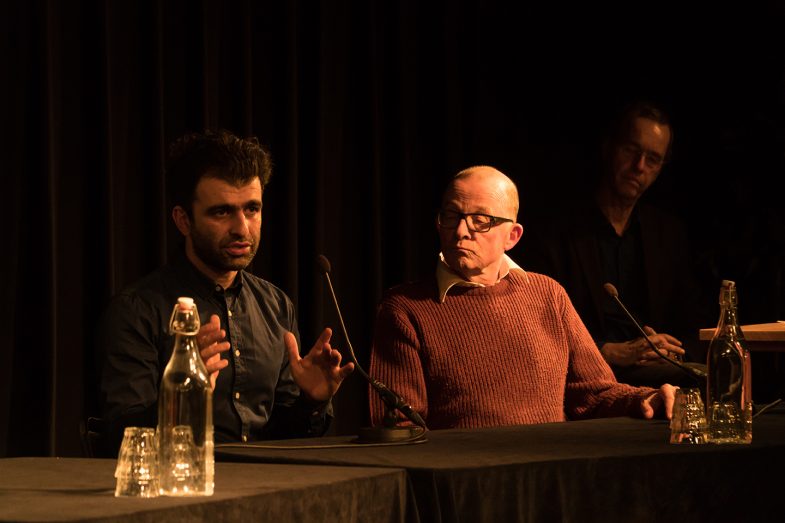

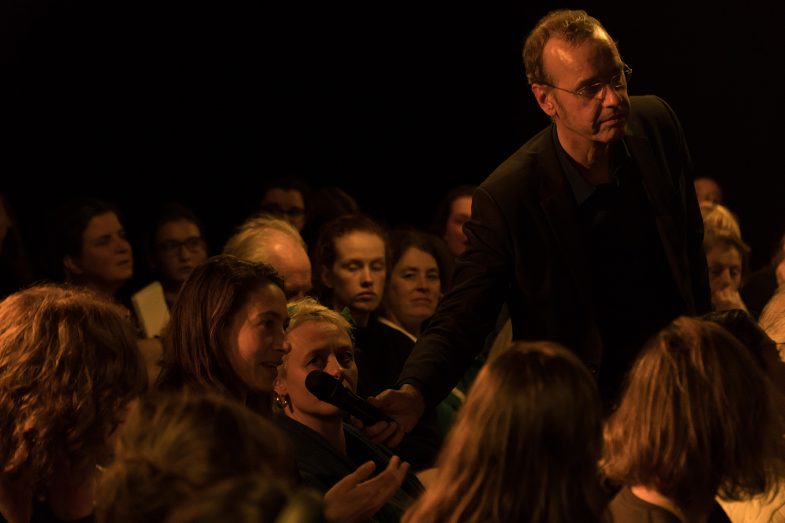
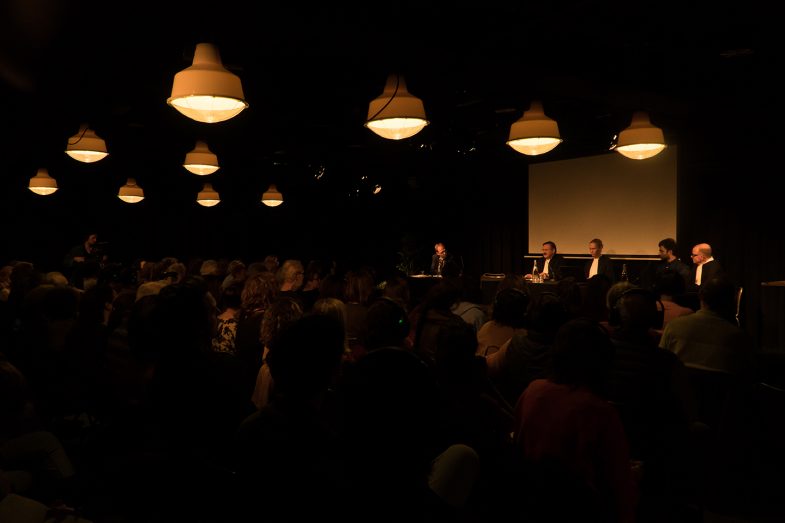
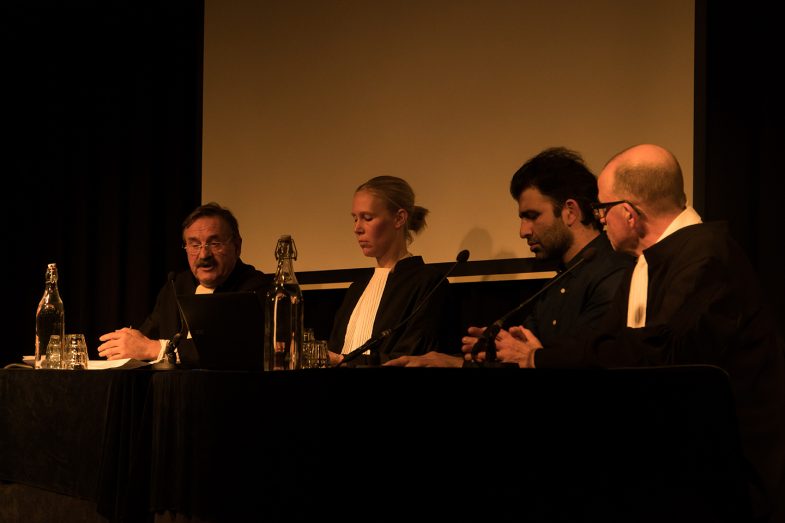
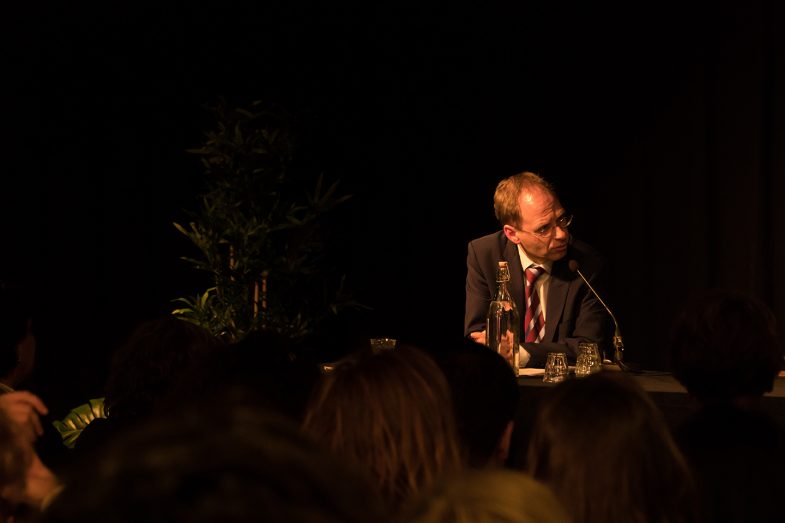
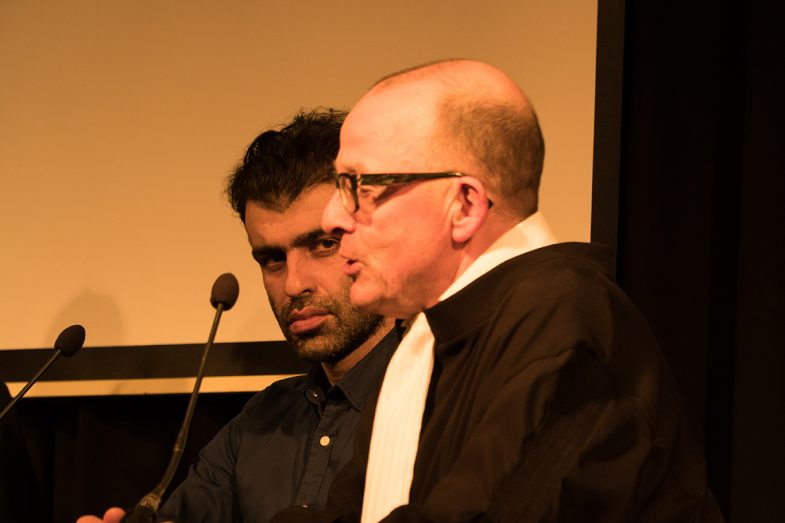


[Dutch]
Op 26 november 2019 in Pakhuis de Zwijger vindt de eerste performance-rechtszaak plaats waarbij echte asieladvocaten samen met een echte asielrechter opnieuw Ali J. zijn vluchtverhaal laten doen. Ali beweert als journalist aanwezig te zijn geweest bij een mislukte poging door de Taliban om dure technologie van zijn Amerikaanse collega te stelen. Zo is hij in het vizier van de terreurgroep gekomen en heeft hij na een ternauwernood gelukte ontsnapping besloten dat zijn leven in Afghanistan niet langer veilig is. De IND vindt zijn bewijs echter ongeloofwaardig en incoherent. Het aanwezige publiek mag Ali vragen stellen en zal uiteindelijk moeten beslissen over zijn toekomst.
[Eng]
On November 26, 2019 in Pakhuis de Zwijger, the first trial performance will take place in which practicing asylum lawyers, together with a asylum judge, will question Ali J. about his persecution story. Ali claims to have been present as a journalist in a successful attempt by the Taliban to steal expensive equipment from his American colleague. He came into the sight of the terror group and after a narrowly successful escape he decided that his life in Afghanistan is no longer safe. However, the IND finds his story unbelievable and inconsistent. The audience present may ask Ali questions and will have to ultimately decide on his future.

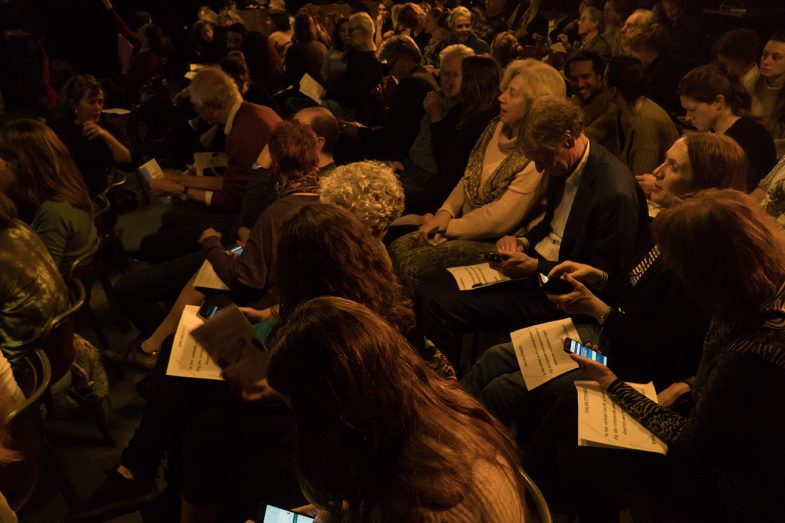
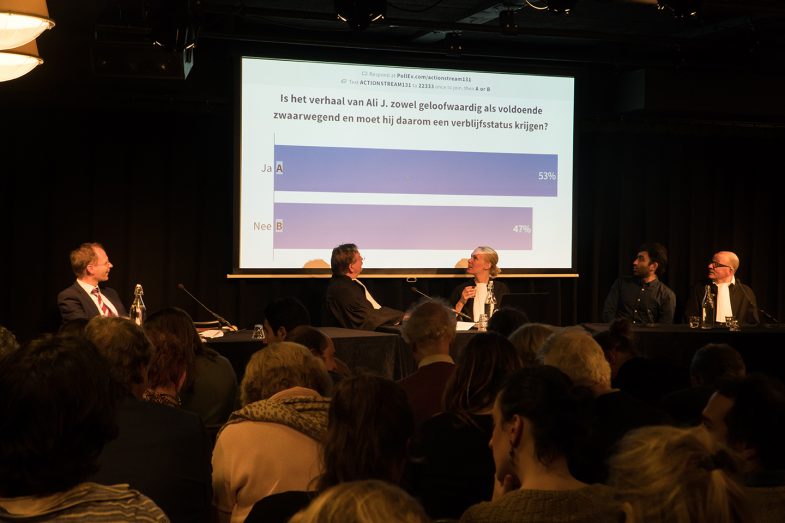
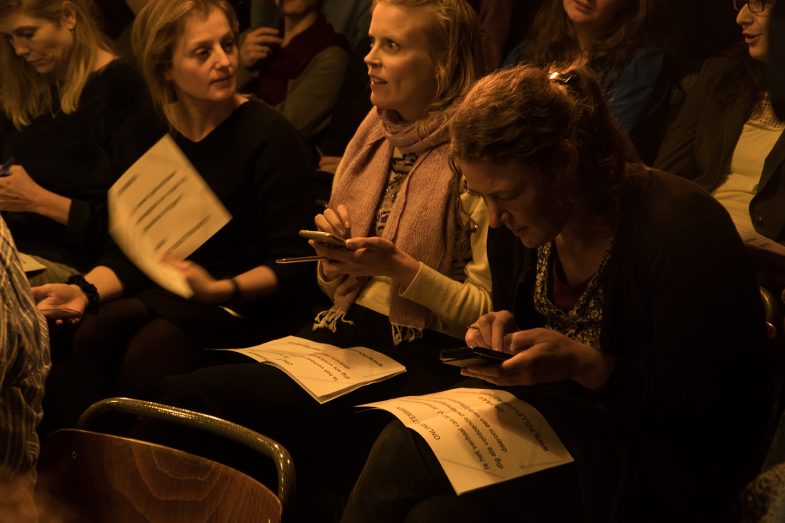
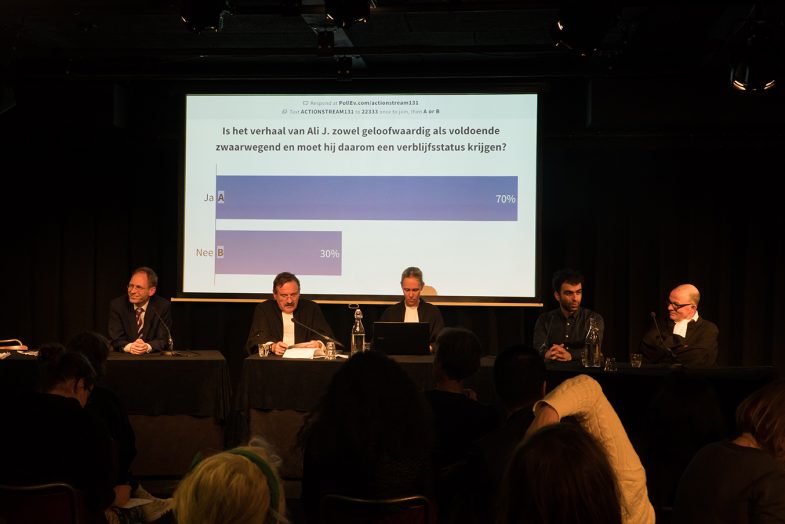

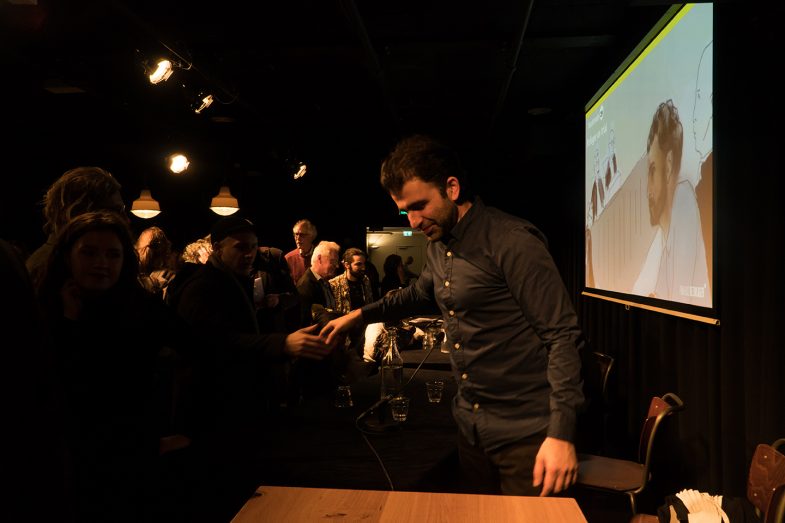
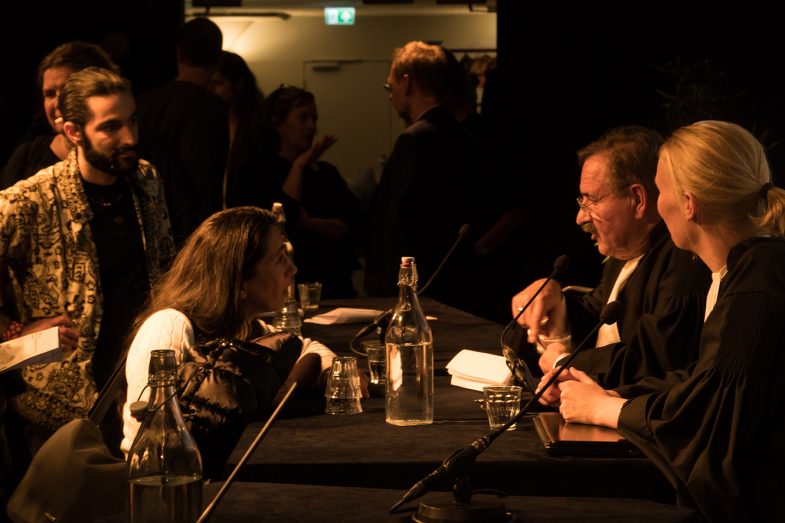
[Dutch] Aan deze uitvoering werken onder anderen mee:
- Teun van Os van den Abeelen. Oud-rechter bij de rechtbank Amsterdam en oud raadsheer in het gerechtshof in Den Haag.
- Ehsan Fardjadniya. Kunstenaar. Optreden als Ali J.
- Carlien Stassen-Buijs. Sinds 1987 werkzaam als advocatuur. Naast het strafrecht, gespecialiseerd in het vreemdelingen- en asielrecht bij Jans & Hagenaars Advocaten Amsterdam.
- Frans-Willem Verbaas. Asiel- en detentie-advocaat van Collet Advocaten Alkmaar.
- Marq Wijngaarden. Asieladvocaat sinds 1989, momenteel bij Prakken d’Oliveira human rights lawyers Amsterdam.
- Frederike van Straelen. Jurist en griffier.
- Hans van Zundert. Asieladvocaat-specialist in Iraanse zaken van Vuuren & Lagerwij advocaten Delft.
- Engelse live vertaling: Margo van de Linde.
- Juridisch advies: Mohsen Jafari
- Performance advies: Kobbe Koopman
- Concept advies: Galit Eilat
- PR advice: Jaël In ‘Veld
- Camera: Olivier Delebecque, Ava Meijer
- Fotograaf: Chun-Hun Chiang
- Pakhuis de Zwijger Programmeur: Max de Ploeg
- Vloer manager: Gina Lafour
[Eng] Contributors to this performance are:
- Teun van Os van den Abeelen : Former judge at the Amsterdam court and former counselor at the court in The Hague
- Ehsan Fardjadniya. Artist. On stage as Ali J. and initiator of ‘Refugee on Trial’ performance.
- Carlien Stassen-Buijs. Sinds 1987 Works as lawyer. Next to criminal law, specialist in foreigners and asiel law at Jans & Hagenaars Advocaten Amsterdam.
- Frans-Willem Verbaas. Asylum and detention lawyer of Collet Advocaten Alkmaar.
- Marq Wijngaarden. Asylum lawyer since 1989, currently at Prakken d’Oliveira human rights lawyers Amsterdam.
- Frederike van Straelen. Lawyer and clerk.
- Hans van Zundert. Asylum lawyer specialist in Iranian affairs at Vuuren & Lagerwij lawyers Delft.
- English live translation: Margo van de Linde
- Legal advice: Mohsen Jafari.
- Performance advice: Kobbe Koopman.
- Concept advice: Galit Eilat.
- PR advice: Jaël In ‘t Veld
- Camera: Olivier Delebecque, Ava Meijer.
- Photographer: Chun-Hun Chiang.
- Pakhuis de Zwijger Programmer: Max de Ploeg.
- Floor manager: Gina Lafour.
Mogelijk gemaakt door / Made possible by
Protected: Kambiz Roustayi
Dr Strangefolks Performance
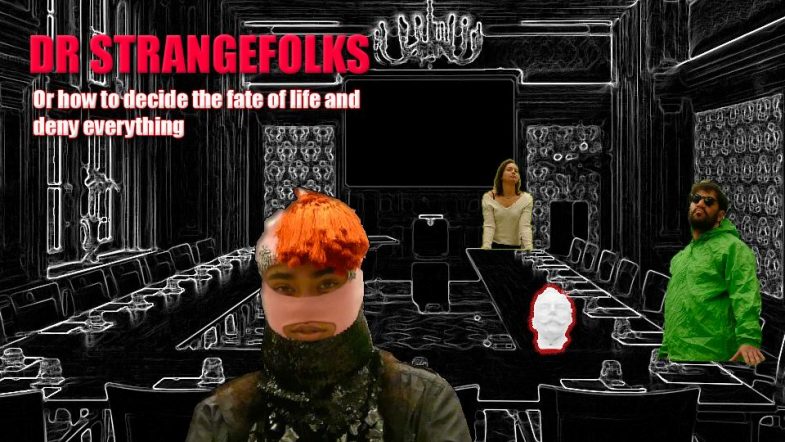
Header
About Dr Strangefolks Performance
Dr Strangefolks is a performance piece that aims at penetrating a colonial and non democratic institution where fate of many lives were decided.
“They are not only ruling over our fate, but also deciding our ways of life, for example what we are going to eat, how we should dress or when we should call our mothers…” chirped the non-fascist bird.
Walls, instruments of control, are mostly build by paranoid heterosexual male to stop penetrations of strange bodies in the feminised nationhood. This paranoid authoritarian subject perceive his body under constant penetration threat of dangerous and foreign objects.
With temporary penetration method Dr Strangefolks performance infiltrate into the first colonial museum in the world: the Dutch Royal Tropical Institute. Acting as a business entity we rent the institute for a conference knowing that artistic performance would not be tolerated or face the gate keepers.
Dr Stangefolks performance is committed to the development of temporary, imaginative, anti-colonial and feminist futures to come after the end of life due to upcoming climate change catastrophe in the next 12 years. Variety of participatory performance score are at play but one the most important moment towards achieving that imagination is when everyone present at the event is able to share their agenda’s and demands before end of life as we know it.
We voice those demands loudly to vibrate the colonial architecture and penetrate through its walls, demanding non-normative, strange and anti-patriarchal bodies and voices to replace the white heterosexual paranoid man cluster in the ‘war room’* conference table.
In honour to ancestors like Ana Mendieta, Marielle Franco and so many females that couldn’t finish their works.
*War room refers to a scene in a cold war movie Dr Stangelove (Stanley Kubrick1964) where white heterosexual men dominate a large conference table in the war room to decide the fate of humanity when the soviet Doomsday is triggered. Modern and contemporary versions of similar events would be Berlin Conferences (1884–85), Sykes-Picot Arrangement, Heeren XVII (the Lords Seventeen) or G8, G20, etc.
Credits
Project created by Thais Di Marco, Ehsan Fardjadniya, Judith Kende
Performered by and with Usman Ahmedani, Rodrigo Batista, Paula Chaves, Thais Di Marco, Ehsan Fardjadniya, Judith Kende, Sydney Lowell
Production of the day by Monica Sharon
Press and PR: Chihiro Geuzebroek
Photographery by Chun-Han Chiang
Videography by Roberta Marques
Info
Time: 25th of November 2018 at Tropen Institute Amsterdam
15h to 16h Arrival and reception
16h to 17h Conference Performance
17h to 18h Drinks at the bar
Facebook Event: https://www.facebook.com/events/183510895899031/
Address: Mauritskade 63, Amsterdam
Language: English
Tickets at the door for 8€. For those who can not afford it any donation is welcome.
Thanks
Thank you to the following contributors for performance research lab: Fernanda Romman, Mavi Veloso, Karina Villafan.
Also thanks to Leoni Kuipers, Sameh Osman, Noah Volker.
Funded by
Amsterdams Fonds voor de Kunst
Photo Documentation
Guided Art Teur
Rubbing and Scrubbing
Power Contest
Reading War Crime Testemoney of Dutch Veteran Joop Heuting in Indonesia
12 Year Before End of Life and Your Demands
Outsider with a Delivery
Fountain
Portraits
Video Documentation
Power & Gender Performance Lab in Iran
To see the full text and documentation of this project please ask for the password by emailing to ehsanfardjadniya[at]gmail[dot]come.
Power and Gender Performance lab in Iran
Details
Concept: ‘Power and Gender’ performance lab in Iran
Format: 5 days labratory, one presentation.
Laboratory format: Sharing and learning from each other’s idea and practice in relation to the concept. Working toward a collective piece for a presentation in the end of the laboratory.
When: End of July, beginning of August.
Where: Bon-Gah No.7, Zanbagh St., Keresht, Tehran-Pardis Hwy.
For Whom: For invited performance artists only.
Documentation
Only with password you can see the documentation. Ask for password by emailing to ehsanfardjadniya[at]gmail[dot]com
Concept: ‘Power and Gender’ Performance
Proposal for a performative lab about ‘Power and Gender’: Practices and trainings to counter repression and oppression.
Understanding the oppressors subjectivity and physicality: How does authority create subjectivities and physical practices to exercise their power? How do they personify and become the agent of state power in the moments of giving commands and choreographing civilians, consequenting in fines, arrestments and deaths?
The exercises are performed in a studio so as to study and scrutinize how these operations are created.
Understanding few tools of oppressive practices:
During the lab we like to focus on the issue of gender in power relations: For this project the counter-training will focus on structuring / inventing gender through social performances of bio-power in public and private spaces that perpetuate the male / female binarity. Harassment, for example, more than a violent expression of desire, is in fact a social message given by patriarchy that presents a dangerous world for women who are then persuaded to remain in the very condition of domination to survive, respecting by fear gender hierarchy and never challenging those who speak for them and who directly influence their choices. The technologies analyzed here will be silencing policy and sexual harassment that operate so that women and members of LGBTQI community can’t denounce their harassers and are always in doubt about the legitimacy of their suffering since gender violence is socially normalized in the most part of the world.
Definition of what is a lab:
it is not a space for vertical learning
it is not a space of hierarchic knowledge production
it does not aim at an end product
it is a space where we study together
it is a time where we share with each other what we found
it is where we play
it is in nature entangled and messy
it has no beginning and no end
Participants:
Laboratory by: Kaloyá, Raoni Shokh and Ehsan Fardjadniya
Performers: …
Protected: Power & Gender Performance Lab in Iran
‘Round Heads & Pointed Heads’ performance at ‘Ideology Meets Implementation’ exhibition at W139
Round Heads & Pointed Heads performance is based on Bertolt Brecht’s Die Rundköpfe und die Spitzköpfe (1934) at Ideology Meets Implementation exhibition at W139
This text is a transcript of the video documentation below.
I, Ehsan Fardjadniya, director, scriptwriter and producer of Round Heads and Pointed Heads, have written this text as a short reflection on the performance. On its third episode, I resigned from the aforementioned roles so the piece could follow its natural flow into a performance piece. I am writing this text as a postscript two months after the final performance as a reflection on the process.
Bertolt Brecht’s original version of Round Heads and Pointed Heads is an anti-Nazi allegory. It is a play that takes place in a fictional country in which sovereignty and power are maintained by pitting round-headed people against ones with pointed heads, placing race relations against class relations and economic inequalities. I adapted this work within the current conditions of increasing identity politics within Western Europe and beyond that serve to bolster deeper segregation, racism, neo-fascism and normalized necropolitics. I modified the play from a theatre script to an exhibition-based performance piece, which was realised through situations of direct public engagement. It unfolds through a conflict between a neo-conservative politician and a revolutionary opposition figure over a businessman’s offer to sell ammunition boxes to whomever pays more.
My version of Round Heads and Pointed Heads included environmental actions in the performance space, with the performance unfolding at different times and locations in a variety of durations. For example, on the opening night the public was separated into groups over the course of five hours, even though the performance was originally announced as only one hour long. Another example was the two unannounced performances; the one of the media group and the other of characters NANNA and friend that both started a few house earlier than the main performance. This left the public wondering if the media team as well as NANNA and friend were performers or not. This was especially true in case of NANNA and friend because they would ask the public directly for a free drink, a place to sleep and a temporary job, which they found the next day when a member of public called them.
Round Heads and Pointed Heads utilised a non-linear narrative, which took place in four episodes, each in intervals of roughly one or two weeks. The result was that some of new public had no idea about what happened in previous episodes, while some of the performer’s intensity fluctuated over the long duration of the work.
The conditions of the ensemble became a means to reflect on the precarious conditions of its members, who were gathered from an open call. This precarity was brought into the production and served to alter the scenarios within it, forming a meditation on how it affects work, income and major life decisions. These life conditions make us, unknowingly, unwillingly or sometime due to lack of alternatives, accept necropolitics and participate in everyday fascism. Non-fascist House started during the second episode, when several performers made one step towards escaping these desperate conditions by subletting their rooms and moving into the exhibition space until the end of the exhibition. The moving in occurred simultaneously with a lecture-performance about subversive art; it triggered a reflection on how certain conditions of the exhibition needed alteration in order to make actually living in the space possible.
In the third episode, Trial, the collective’s precarious working and living conditions left no time to come together to discuss and rehearse, meaning that relations between performers and the script were not particularly intimate. Therefore we decided to play ourselves; the trial transformed into an assembly to discuss conditions of working together, roles and expectations of the director, hierarchies and hidden forms of fascism in the production process and its relation to the public and ourselves.
The last episode was a new situation to separate the public. Unlike the first episode, it was not based on their self-identification with immigrant or expat, but rather on the quality and price of their shoes as a reference to their potential social class. The ones with more expensive shoes received a coin and consequently had an exclusive dinner cooked by refugees, which they had to eat while sitting with neo-conservative politician IBERIN at his long table. The rest of the public received Poor-man’s Soup, cooked by two Dutch men with dumpster-dive ingredients.
Performers
Noah Voelker, Fernanda Romann, Angelo Custódio, Eva Pyrnokoki, Pedro Matias, Arthur Guilleminot, Elisabeth Raymond, Anthony Nestel, Thais Di Marco, Fleur Mollo, Floris Schafer, Veniamin Kazachenko, Irini Pigaditi, Gerolamo Lucente, Toby Paul, James Hewitt, Leonie Kuipers, Olivia Malena Vidal and Maria Montesi.
Adapted and directed by
Ehsan Fardjadniya
Link to W139Ideology meets Implementation exhibition curated and organized by Pendar Nabipour.
Documentation
First Episode: Crisis in the Land of JAHA, Rise of IBERIN and Allegation of the Lord of Boxes. 13 Oct. 23:15.
Photographs by Chun-Hang Chiang and Maryam Ashrāfi.
Episode Two: Contemporary Subversive Insurgency hosted by Quinsy Gario with the participation of Angela Bartholomew and Menoo Grootveld. 4 Nov. 19:30.
Episode Three: Public Trial. 11 Nov. 19:30.
Episode Four: Deportations. 18 Nov. 2017.
Video: camera and edited by Floris Schäfer
Dutch Racism
The Ideologically Colonized Metropole: Dutch Racism and Racist Denial by Melissa F. Weiner
[pdf-embedder url=”http://ehsancritique.com/wp-content/uploads/2017/06/Dutch-racism.pdf”]
Movies that Matter | Raving Iran
Movies that Matter | Raving Iran
This month, I’m the quest speaker of Movies that Matter, Amnesty International, about Raving Iran film. Tonight, 10 May, at Natlab Eindhoven and Kriterion Amsterdam. 14 May at Filmhouse The Hague and 24th in Arnehem. You can read my text here below:
About ‘Raving Iran’ film
By Ehsan Fardjadniya
What does raving actually mean? Oxford dictionary definitions are: ‘Talk wildly or incoherently, as if one were delirious or insane’. Second meaning is to ‘address someone in an angry, uncontrolled way’ or ‘speak and write about someone or something with great enthusiasm or admiration’. In a more informal way raving means ‘attending or taking part in a party with electronic dance music and drugs.
After watching the film ‘Raving Iran’ I like to question who is actually raving Iran and how? Are the main characters of the film, Anoosh and Arash, raving Iran by going around deliriously and talking in the language we don’t understand? This could have been the case in the colonial times, where orientalist scholars represent Middle East and its people in stereotype ways. In ‘Raving Iran’, I think the same Orientalism exist but in a less traditional way. I’ll expand this statement by investigate my earlier question of who is actually raving Iran.
Is the morality police raving Iran? With raving I mean here as in addressing someone in an uncontrolled and angry way. Yes, indeed! The morality police does that and the film starts immediately with this exact message: ‘Morality police randomly stops and controls young people in a very authoritarian manner. So we, as the public in the West understand several quite stereotypical messages, such as: ‘Dangerous place’, ‘dictatorial regime’ and ‘Orwellian scenario’. This is at one hand true, but at the other hand global politics are more complicated than that.
Iran is currently surrounded by two or three countries in constant turmoil. Two of those countries, to put it shortly, are thrown into chaos by local and international war lords and terrorists. This situation gives extra legitimacy to the repressive Iranian government to impose more ‘raving control’. And simultaneously the Iranian people showing less resistance to these measures of control due to fear of terrorism. In Europe the same fear creates similar effect of obey to increasing security checks and controls. But there is still a quite big difference. There are many more attacks in Europe than in Iran. One should really wonder why that is?
In the following scene after the rave of the moral police, Anoosh and Arash are free to go and we see Tehran from their car window. Tehran is a vivd mega metropolis, especially at night. From everything that might happen in the city we only see the regime’s propaganda in the form of murals one after the other. Soon after, under the eyes of the same Islamic leaders with their portraits on the wall, we discover a hidden scene. That is when Anoosh and Arash arrive to a house party to DJ. In this house party the only scene we see is dancing female bodies with unexpectedly open cloths. After few seconds of these scene, the rave of electronic music in the house party is mixed into call-for-prayer and changes to the next scene where we see, a traditional female cooks on the public Iranian TV. These two scenes are cut after each other to perhaps create an binary analogy that represents a clashing contrast between the raving youth and the Islamic conservatism. As usual in the Orientalism again two clashing stereotypes are created.
This is the second time in the first 10 minutes of the film where the German director, Susanne Regina Meures tried to convince us of the clash. This time with the hard contrast of the raving youth techno music against repressive regime and their call-for-prayer. Perhaps there isn’t enough space in this text to expand in dept the problem of religion. But I just want to make sure that these scene are not confirming and feeding into the current Islamophobia in West. If we study the history of Islam a little more than just the daily news and as far back as in the Middle Ages, we can have many examples where caliphs of Islam allowed, tolerate and even promote mix of religions and cultures, be it music, literature and science. This is when the Christian Europe crucified their scientists who spook differently than the Bible. So it is quite obvious that the state’s ideology utilizes and exploits religion as an unifying cultural element and interpret it into radicalism they seek and require for their repressive existence. Especially so when state’s existence is endangered by internal rebellion, or external forces like territorial wars, colonialism, imperialism, international sanctions or global capitalism. What I’m trying to say here in short is: It is a false assumption to think Islamic Republic of Iran is a repressive regime solely due to nature of Islam as its religion.
Hopefully now my claim on Orientalism in this film is a little more clear. Almost in non of the films, documentary or fiction, I watched about Iran in Europe, did I see anything about for example the constitutional revolution in Iran in years of 1905 to 1911. Constitutional revolution demanded the end the monarchy and establishment of a parliament to change the elitist government and bring it closer to the people. In non of the films in Europe about Iran do I see the role of England and Russia in crushing the constitutional revolution by supporting Mohamad Ali Shah to bomb the young parliament. Russian’s and British, and later the American’s constant involvement in appointing puppet regimes, assassinating the national heroes like Mossadegh, arming Sadam Hossain with chemical weapons and supporting him to attack the young Iranian revolution, went all by and the whole word was watching silently and still the West is not talking about their own part in creating the repressive dictatorships in Middle East but blames Islam and feeds to its own Islamophobia to hide its own dark past and current crimes. For example the illegal sale of spy devices by European surveillance companies to clients like Iran isn’t talked about at all. This equips the repressive regime to crack the resistance, and rave parties. So who did really rave Iran and Iranians?
Till now, I analyse the opening of ‘Raving Iran’. After those two opening scenes, the main part of the film shows the struggle of the duo electronic musicians, Anoosh and Arash, who are trying to organise a raving party in Iran. Simultaneously they try to publish their CD and bring to the market. The film shows the frustration and the strategies of the duo when facing the censorship committee, their fears and at the same time their unstoppable raving energy that tries to open back doors.
What the film lacks is to stablish is a different view than that binary of good versus bad, youth versus repressive old conservatism, Western culture versus state censorship. Most of us with a little interest in Iran are aware that those kind of music and western culture are having hard times finding their expression. For me the interesting question would be how does the forms and the functions of art changes in those conditions and what other parallel worlds open up? And what does really happen in those world? As an Iranian abroad , who hasn’t return for more then 14 yeas, the film would have excite me if it could dare to dive deeper into the very vivid underground art and music scene of Iran.
‘Raving Iran’ instead of creating an interesting curiosity about the function of art and culture in suppressive regime, and instead of showing us more of the subversive raving culture and its makers, the focus of the film shifts to Anoosh and Arash try to scape to European liberty, without questioning what this liberty really is.
Since my arrival to Europe in year 2000, and after few years in refugee camp, I have studied and worked in the cultural scene in Europe. I have spoken to many European and American cultural workers who actually like to have access to that underground techno scene of Iran. Exactly because of its illegality and subversive energy. Something that we have forgotten in Europe. And of course it is quite normal for Iranians who have worked under lots of serious dangers to feel like escaping when they watch spectacle of Europea, i.e. European utopia, propagated in the form of festivals. But of course the Europea becomes even more desirable when you can’t reach it. Iranians can’t just come and visit Europe. They should become refugees if they want to stay and experience the West. But for the Westerners on the other hand Iran has made it as easy as asking visa in Tehran’s international airport. But Iranian either don’t get visa or as we see in the film only for three or four days after weeks of bureaucratic application process. Why is that not possible for Iranians to receive visa in Amsterdam Airport? Is that because Iran still is under international sanctions?
So finally Anoosh and Arash can come to rave in Europe. How much raving is that actually? Can we say that the large festivals have become reverse of what festivals and carnivals raving culture actually meant to do? So can we say that instead of a lively, noisy rave outside the daily rules, the large festivals have become a form of control. The festival organisers have to receive a permission from the municipality and submit to dozen of regulations by the government. All and all to do it well your rave has transformed to a business model with organizational structures and hierarchies instead of a Do-it-yourself burst to rave. The financial sponsors who actually govern those festivals brings with themselves the expensive tickets and fences, another immediate forms of control, hidden in the fantastic pictures of liberty and rave.
Of course here in Amsterdam we can also try to organise an illegal rave party but then the same danger exist as it does in Iran. For example once I and approximately 150 other artist and visitors where arrested here in Amsterdam because we organized a raving party on the evacuation date of an squatted building that we turned into cultural space and ran successfully for many years. I was held for 3 days in a solo cell and few of us as long as few months.
This complexity of situation is what I wished the film could portray. Instead ‘Raving Iran’ is limited to what the West like to deceive itself with it’s own liberty spectacles. As if the director isn’t really interested in the rave culture in Iran but more in brining up a prefabricated message. Especially because the film’s end-scene give us an exact feeling of happy end. Yes the guys are here and it will be fine. I like to actually know what happened to them and to their dreams?
As an ex-refugee I have seen many dreams faded away in depression, lost in limbo of asylum maze. Waiting, waiting and waiting for years and years in the camps, in the middle of nowhere with fences around you, with no right to study and work. Even if you had the rights, what energy could hold you to your dreams when at any moment you can be deported? This is the reality you face at the end of you long odyssey. Instead of promised freedom, life is a psychological torment in the spectacular labyrinth of lost dreams.
Ehsan Fardjandiya 26-04-2016 Amsterdam
‘Hinterland’ in Post-Peace Exhibition Wuttembergischen Kunstverein Stuttgart. Installation and performances
‘Hinterland’ in Post-Peace Exhibition at Wuttembergischen Kunstverein Stuttgart. Installation and performances
In this article you can read about the concept of “Hinterland” installation in “Post-Peace” exhibition at Wuttembergischen Kunstverein Stuttgart. In this post you can also see two related performances.
Concept of ‘Hinterland’ installation in Post-Peace exhibition:
“Stage for Tragedy” is originally the title of Alexandra Exter’s 1924 stage design drawing for a tragic scene in a film. It depicts a global labyrinth as a system of segregation and exclusion that causes disorientation, vertigo and fear at home or while trespassing national boarders. At the same time, Exter’s stage is a mental space governed by rigorous, yet fracturing, disciplines of how to behave and where to go. To translate the “Stage of Tragedy” to the contemporary, I appropriated the design of an ammunition box and used it as a basic element to construct the stage. The wood was sourced from second-hand pallets purchased in Stuttgart. The work alludes to the on-going free travel of goods and borderless exportation of death by the German and Western European weapon industries. The stage will function as a collaborative performance space that can be transformed into a variety of shapes according to the needs of each performance group
With special thanks to Andrés Novo assistance in deisgn and architectural adaptation.
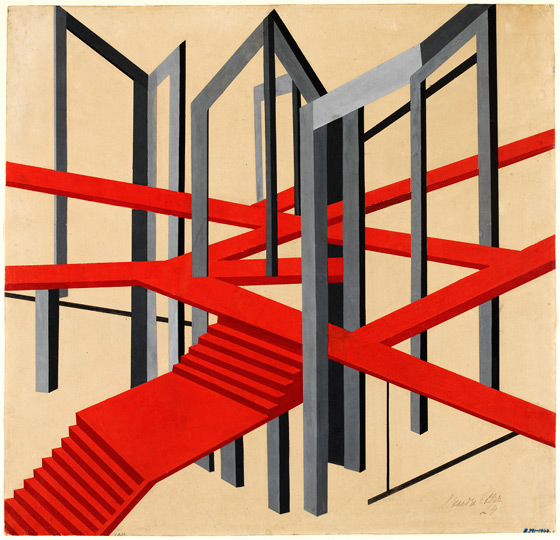

Installation documentation:
List of Related Perforamces:
1. Performance ‘Building up the Hinterland’ Mid Jan- 24th Feb.:
A performative building up of ammunition boxes for the ‘Hinterland’ installation. I deconstruct Euro-pallets and transform it to boxes in style of ammunition boxe for duration of five weeks, more than nine hours of daily wolr with only one Sunday break.
Making of ‘Hinterland’ from Ehsan Fardjadniya on Vimeo.
Hinterland is a place between two lands
It isn’t the mainland, it isn’t my motherland
They say it is a port of fabrication, with no shine in its sand
You should leave from it, as far as you can
I want to reach, what they showed me as heartland
Not this euro-pallet and plastic, shantyland
Hinterland isn’t Netherland, Deutschland, Finland or Switzerland,
Nor is ausland in or outside the motherland
…
I got a new occupation in this new portland
I build ammunition boxes for the homeland
They say it wouldn’t be used in your fatherland
The money will go to art and culture on one hand
And some for sick baby grant, on the other hand
I don’t know, maybe it is for those who we strand
One day on this, not light but dark dark volcanic sand
Ehsan Fardjadniya
Stuttgart 2017
2. Performance ‘Where is Stammheim?’, 14th February:
Where is Stammheim (1)? Or where is Stamm Heim (2)? Where is home? Where is the prison? Where is exile? Are you home in exile? Can you feel home in prison? Can prison become home? Does a shelter, a place to refugee still exist? Where are the boarders of prison? How can you escape that prison? And where would you go after crossing the boarders of that prison? The last question reminds me of the moment when Truman touches the walls horizon in the end of the sea.
Related Article: ‘The Built Environment and Carcerality‘ by Egbert Alejandro Martina. Quote:
“Mi mama no tin plaka My mother doesn’t have any money
Hinka mi den un doshi Put me in a box
Manda mi na Hulanda (And) sent me to the Netherlands
Ora mi a yega Hulanda When I arrived in the Netherlands
An old Curaçaoan children’s song”
____
- Stammheim is a maximum-security prison in Stuttgart, Baden Wuttemberg, Germany. An extra secure part was added to the jail to confine the Red Army Faction leaders as well as trial courthouse. The prison is where the “Dead Night” happened. A night when four leading members of Red Army Faction committed successful suicide, accept the fourth member Irmgard Möller who survived her suicide attempt. She stated that the deaths where no suicide but rather undertaken by the German government.
2. Stamm means tripe and Heim means home in German. Although the combination of words in such order and with space in between is not used in German language.
Where is Stammheim? from Ehsan Fardjadniya on Vimeo.
 Performance ‘Where is Stammheim?’ with work of Olaf Metzel in the garden of Wuttembergischen Kunstverein Stuttgart.
Performance ‘Where is Stammheim?’ with work of Olaf Metzel in the garden of Wuttembergischen Kunstverein Stuttgart.
3. ‘I Must Seek Refuge Again‘, 24th February at the opening of ‘Post-Peace’ exhibition:
Ongoing performance during the opening of Post-Peace exhibition entitled: ‘I Must Seek Refuge Again‘. A durational performance in the close confinement of one boxes for time span of seven hours.
About:
The performance was not announce to the public but only communicated with few people so that it would become a secrete information or roamer.
The end of the performance happened by intervention of Anna Dasovic, one of the artist in the show. She repeatedly insisted that i should stop, end the performance and come out of the box. A that moment i thought actually this is a very sincere and humane request. During my performance i was actually thinking why no one comes to save me? In some snooze moments in the box i actually was dreaming that people at the opening and artists whom would know will come and save me out of the box. The longer it took the more disappointed i become about my possible saviours.
4. Performance ‘Ammunitionboxing’, 26th February:
‘Ammunitionboxing’ inspired by ‘Soapboxing’, which is a improvisational political talk in public space. This performance took place at Schlossplaz outisde the Wuttembergishe Kunstverein Stuttgart at the second conference day of Post-Peace exhibition. I invited the public to take a box from the installation and take it outside the white-box to the main square where i held my soapboxing speech
Soapboxing performance from Ehsan Fardjadniya on Vimeo.
‘Polacy! Citizens and Refugees’ Interventions Warsaw Uprising Museum & Frontex
Title:’Polacy! Citizens and Refugees’ Interventions Warsaw Uprising Museum & Frontex
Subtitle:
Long live emancipation from nationalism
Info:
Public Performances (Warsaw Museum of Uprising and Frontex HQ)
Year:
2016 – Continuation 2017
Articles:
Majewska, Ewa and Kuba Szreder (2016). ‘So Far, So Good: Contemporary Fascism, Weak Resistance, and Postartistic Practices in Today’s Poland.’ E-flux Journal #76
Gravenor, Vanessa (2016). Anonymous Stateless Immigrants Collective. The Seen Journal.
Documentation:
Photography, video, factual report
Scene One at Warsaw Uprising Museum
‘Polacy! Citizens and Refugees’ Interventions Warsaw Uprising Museum from Ehsan Fardjadniya on Vimeo.
Scene Two at Frontex HQ.
‘Polacy! Citizens and Refugees’ Interventions at Frontex from Ehsan Fardjadniya on Vimeo.
Factual Report
[pdf-embedder url=”http://ehsancritique.com/wp-content/uploads/2017/01/report-of-our-actionperformance-warsaw-uprising-musuem-frontex-2.pdf”]
‘Refugee Monument Berlin’ at Maxim Gorki Theater
Title: ‘Refugee Monument Berlin’ at Maxim Gorki Theater
Subtitle: Only an unfinished memorial process can guarantee the life of memory
Info: installation. Commissioned by Maxim Gorki Theater
Year: 2015-ongoing
Documentation: Photography, website. Gorki Website
‘Anonymous Stateless Immigrants Pavilion’ at Venice Biennale
Title: ‘Anonymous Stateless Immigrants Pavilion’ at Venice Biennale
Information: graffiti, performance
Year: 2011- 2015-ongoing
Documentation: Photography, video
Article: Danner, Stephanie (2015). Anonymous Stateless Immigrants An den Grenzen der Biennale. http://www.woz.ch.
‘Voice Over North’ performance in public space on otherness
Title: ‘Voice Over North’ performance in public space on otherness
Subtitle: Discussing otherness, origin and destination in public buses
Info: ‘Voice over North‘ public program of ‘Crisis of History III’ exhibition at Framer Framed in Amsterdam north, performance on public bus
Year: 2014
Documentation: Photography, video
voice-of-the-other from Ehsan Fardjadniya on Vimeo.
‘Cinedome’ Geodesic dome for collaborative cultural events
Title: ‘Cinedome’ Geodesic dome for collaborative cultural events
Subtitle: Portable Green energy mobile stage for event and collaborations
Info: A self-designed and build geodesic dome together with powerful off grid solar system
Year: 2013- ongoing
Documentation: Photography, Video
‘Pirate Cinema’ Maldives Pavilion 55th Venice Biennale. portable, green energy, public space cinema
Title: ‘Pirate Cinema’ Maldives Pavilion 55th Venice Biennale. portable, green energy, public space cinema
Subtitle: Portable, green energy, public space cinema from Amsterdam to Venice
Info: Two weeks of public space film screening in streets of Venice as part of public program of “Portable Nation” exhibition at the Maldives Pavilion at 55th Venice Biennale
Year: 2013
Documentation: Photography, video
Interview with Ehsan Fardjadniya by Dorian Batycka

‘Occupy Information’ at Occupy Amsterdam
Title: ‘Occupy Information‘ at Occupy Amsterdam
Info: Self-made and collectively organised mobile information stand at Occupy Amsterdam.
Year: 2011
Documentation: Photography, video.
‘Ali Likes Museums’ Graffiti intervention at museum-night
Title: ‘Ali Likes Museums‘ Graffiti intervention at museum-night
Info: Self-organised graffiti text performance during Museum-night Amsterdam.
Year: 2011.
Documentation: Photography, video.
‘Ali Likes Museums’ public Space Performance in Amsterdam from Ehsan Fardjadniya on Vimeo.
‘Space for Play’ public space performance situation play
Title: Space for Play (public space performance situation play)
Info: Self-organised, public space performance during various social and political events, elections and demonstrations.
Year: 2009-2011.
Documentation: Photography, 2-year durational video compilation.
'Space of Play' from Ehsan Fardjadniya on Vimeo.
‘Cultuur Taxi’ Culture Taxi for Refugees
Title: Cultuur Taxi (Dutch), Culture Taxi for Refugees
Info: Self-organised Museum-night tour for refugees.
Year: 2010.
Documentation: Slideshow, Storytelling.
